
- solar electric yachts
- Soel Senses 62
- Soel Senses 82
- Soel Shuttle 14
- Custom model

IN-HOUSE SYSTEM
From the very inception of the first line drawing, each element of our solar electric boats is purposefully and intricately designed and engineered to achieve the utmost efficiency in clean solar electric propulsion. Our engineering team possesses a unique skill set encompassing electric naval architecture and electrical system integration, resulting in unparalleled performance and endurance.
Our electric propulsion systems excel in terms of power density and system weight. With an average of just 1 kg per kilowatt (1 kg/kW), our PMS electric drive train stands as the lightest and most powerful system in its class. This achievement is built on our extensive experience in ocean-going solar electric naval architecture and photovoltaic (PV) and energy storage systems, a legacy that dates back to 2007, and it’s now powering our solar electric yachts to perfection.
PREMIUM QUALITY
Marine-grade lithium-polymer batteries serve as the robust foundation of our system, complete with comprehensive safety features. Our integrated systems showcase modular, semi-custom lithium-polymer batteries ranging from 24V up to 800Vdc, ideal for high-power applications. With a proven track record of over 15 years on our vessels, these batteries are renowned for exceptional quality, energy density, and reliable operation, making them well-equipped to meet your power needs.
MAINTENANCE
With only one moving part the electric system is basically maintenance free compared to any conventional fossil fuel powered motor. This allows for less headache about replacements of engines or dirty oils and results in a substantial amount of money saved at the end of every single year.
The total cost of ownership of the solar electric boats is approximately 20% of what a conventionally powered vessel costs over the years for operational costs (fuel), maintenance costs (consumables, service parts, etc.) and rebuild costs (investment for new engine after several hours of operation).
TECHNICAL SUPPORT
For complete peace of mind our dedicated customer services team is always on standby. Offering remote technical support and advice for every Soel Yachts owner is one of our highest priorities. We are in this together. Working with the latest software for updates and troubleshooting enables us to keep your modern boat on the highest standards. Whether you require warranty support, spare parts, system upgrades or a service visit anywhere in the world , our competent service team is not far away and pleased to help you further with what you need.

SMART FUNCTIONALITY
All of our sustainable vessels are equipped with smart technology for an integrated monitoring, alarm & control system. The user interface can be viewed on a range of monitors or smart devices — even your phone or tablet. It presents all relevant system data from your electric boat and enables us to offer remote monitoring and service support.
MOBILE POWER STATION
Our solar electric boats can even be used as mobile power stations and provide AC inverter power for the mainland. The excessive solar energy can be used to feed back energy to the grid .
Most resorts use desalination systems to produce fresh water for laundry, showers and cleaning — an average energy consumption of 3 kWh for every m3 of water produced. Plug the SoelCat 12 into your grid and you can make the equivalent of 2000L fresh water with the harvested energy, per hour. The mobile power capabilities allow you to be fully energy autonomous without the need for any extra generator!

get in contact

Why Silent technology?
What makes our solar-electric yachts unique and sets them apart from the rest? It is our extensive experience with the technology. By substituting generators with solar power and large battery banks in order to supply energy to all household appliances on board since the mid 1990s and by pioneering the solar-electric drivetrain during the mid 2000s, Silent has gathered about 30 years of experience in optimizing sustainable energy generation on yachts.
As the original brand who invented solar powered electric production yachts , we have always been committed to a technology which was prior considered as a niche. We were already building solar powered yachts with electric propulsion at a time when no other legacy shipyard even considered using this technology in the future.
Since 2009, our electric yachts have sailed 10.000s of nautical miles flawlessly, crossed oceans and hosted charter guests for hundreds of weeks all around the world – across the Mediterranean, Caribbean, Atlantic, Pacific as well as the Indian Ocean.
Recently, it has become increasingly popular within the industry to power catamarans with solar energy. Nevertheless, not all electric yachts are created the same. While it might be easy to equip a boat with solar panels, it is a far more complex process to create an electric yacht that fulfils the full potential of luxury solar yachting. There are many vital considerations when using solar technologies: efficiency, range, reliability, comfort, longevity and sustainability are all criteria to optimize. Inevitably, to cover all these aspects, it needs a clean sheet design from scratch.
Taking an existing fossil fueled powered or sailing catamaran and including solar features on the model will always create a compromised result. In comparison, our fully electric Silent models were designed from a clean sheet and engineered to be fully solar powered from start to finish. This is why our yachts outperform competitors regarding weight, daily solar production, range, speed, consumption, space, safety and life-span.
It is not the kWp promised in a brochure, it is the real energy production and the realistic consumption that makes the difference for you as a customer. It will either enable you to run the A/C for the whole night and to drive dozens of miles without running the generator – or not. A Silent is capable of doing that. This is the difference.
Our founders, Michael and Heike Köhler, were the ones to create the solar yachting space by starting Silent Yachts (then called Solarwave) years before the industry was aware of the advantages of this new approach. Nearly 30 years after starting their initial research, Silent now shapes the future of electric yachting.
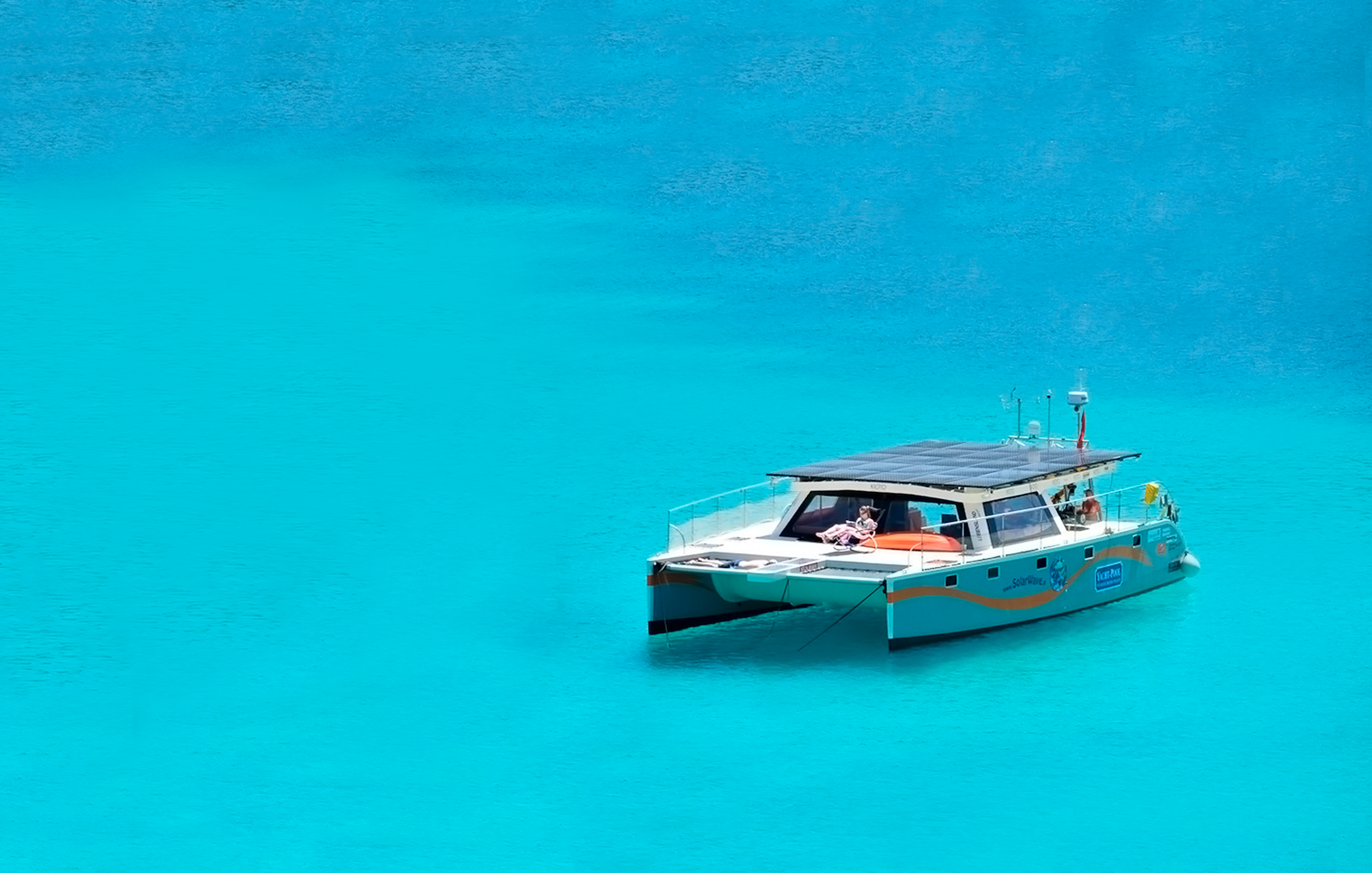
Solarwave 46 in Lakka bay, island of Paxos, Greece, in 2010.
Science & Experience Based Design
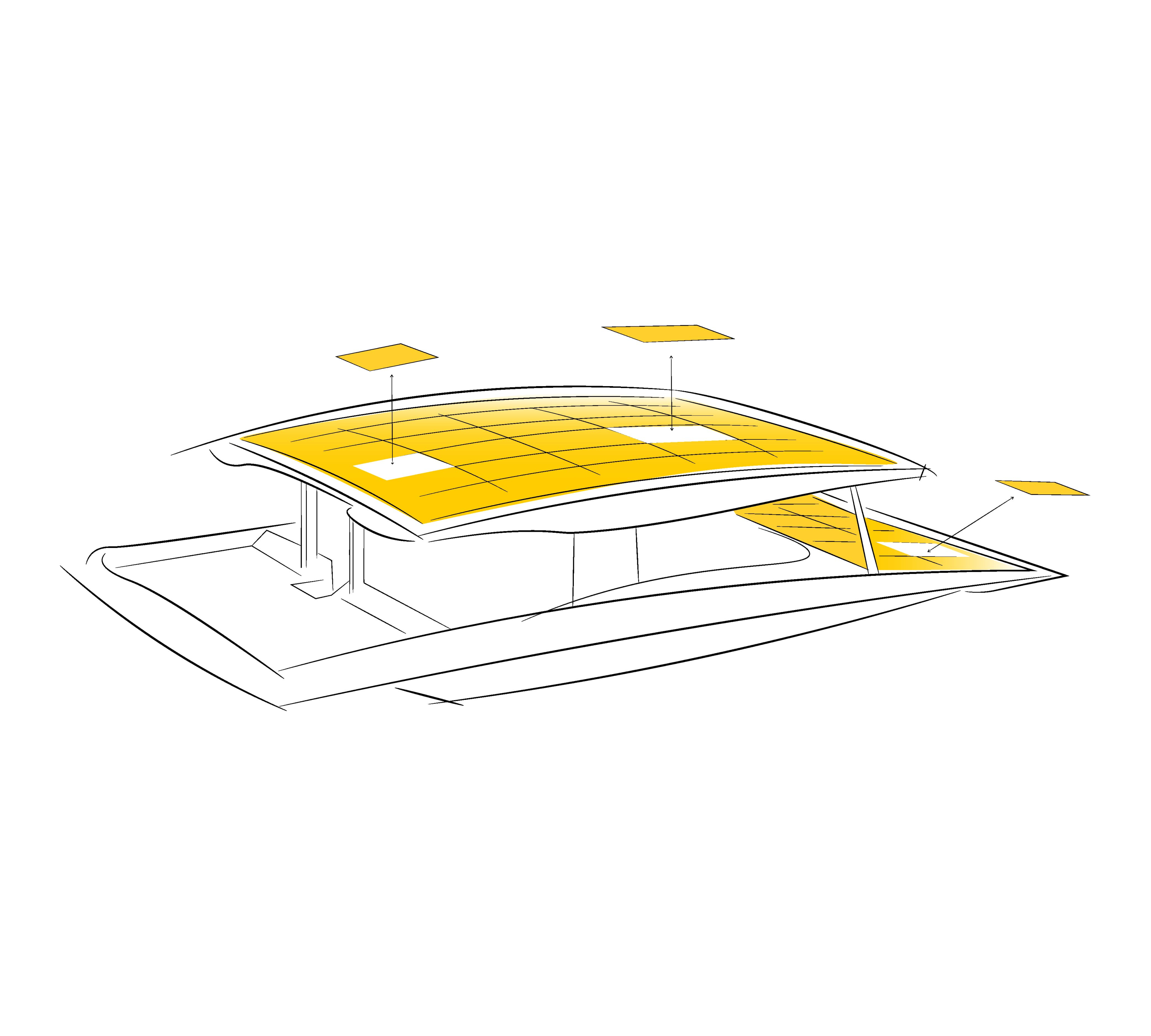
Bolt-on construction
Our bolt-on construction design makes it easy to replace individual panels for repair or upgrade them to more efficient versions in the future. In contrary, solar panels which are directly integrated into the hull or glued onto the roof are not designed to be replaced when required.
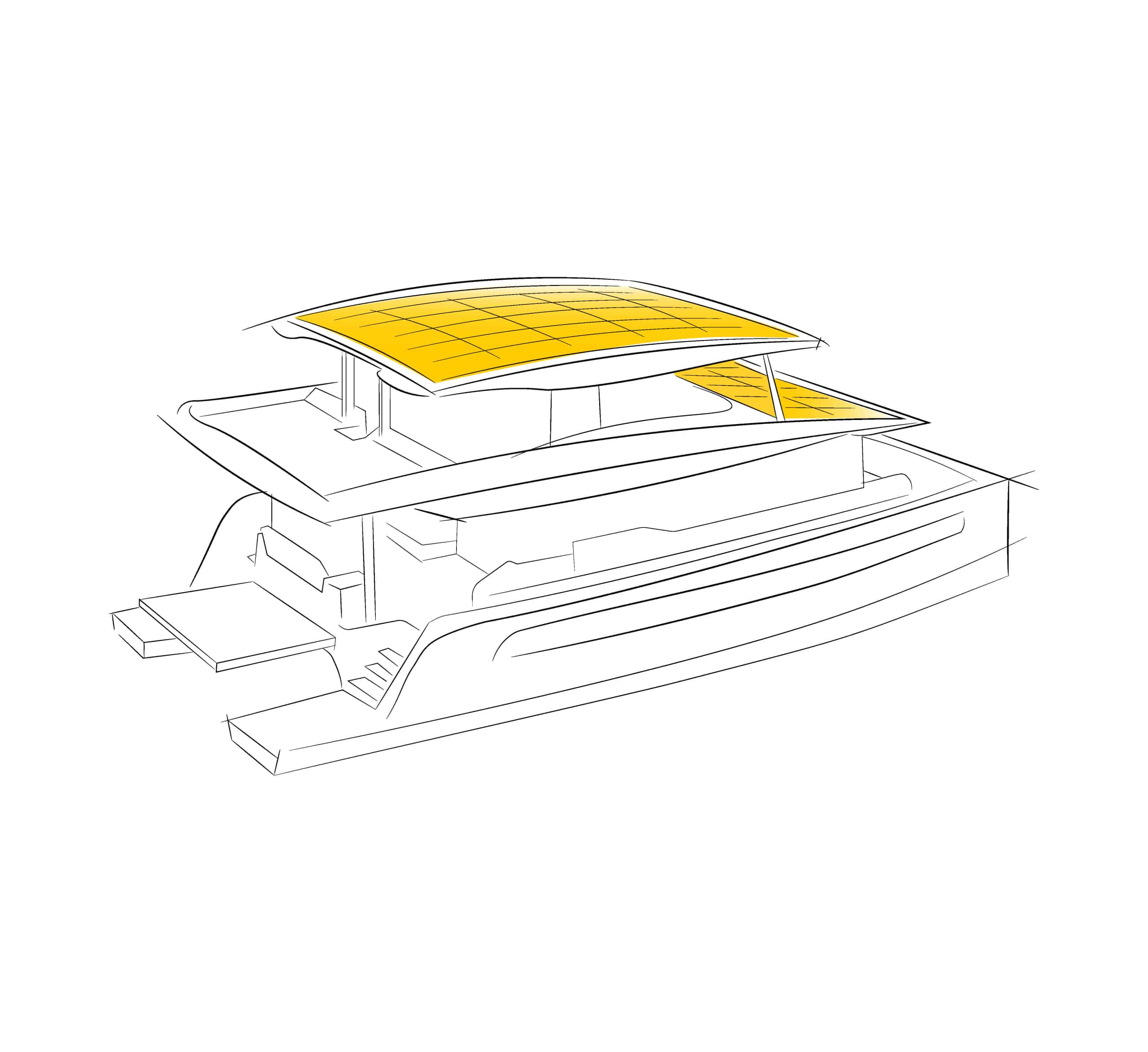
Rooftop positioning
Placing the panels horizontally on the top ensures maximum energy harvest. In comparison to vertical panels integrated into the hulls, this positioning captures more energy from the sun while also protecting the solar cells from being damaged during mooring in a marina or when in contact with sea water.
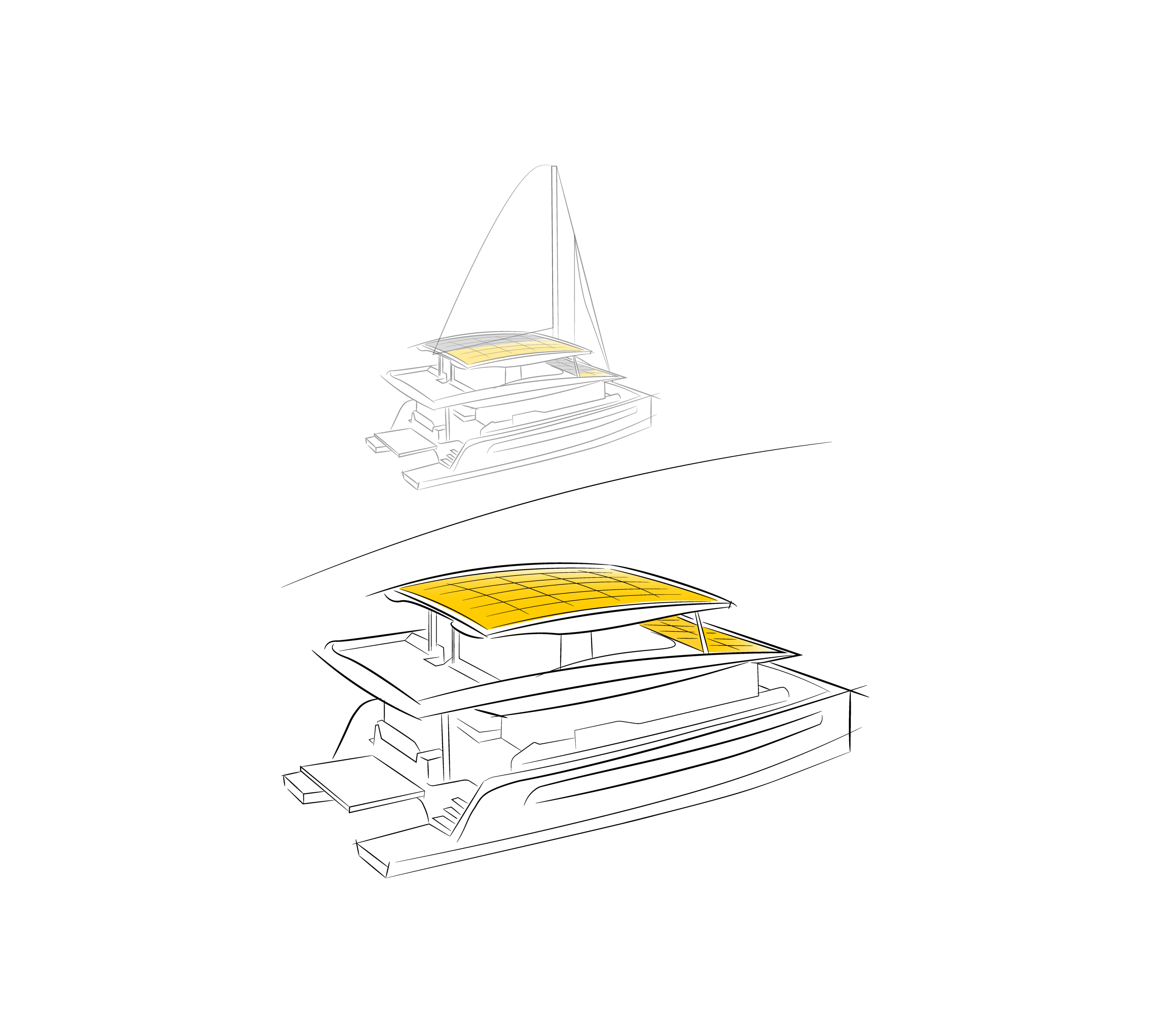
Zero shade principle
Silent Yachts purposely exclude the addition of sails or wind turbines as they cause the issue of partial shading, leading to a dramatic decrease in energy output and efficiency. Our years of testing revealed that wind turbines actually create more drag during cruising than energy produced at the same time.
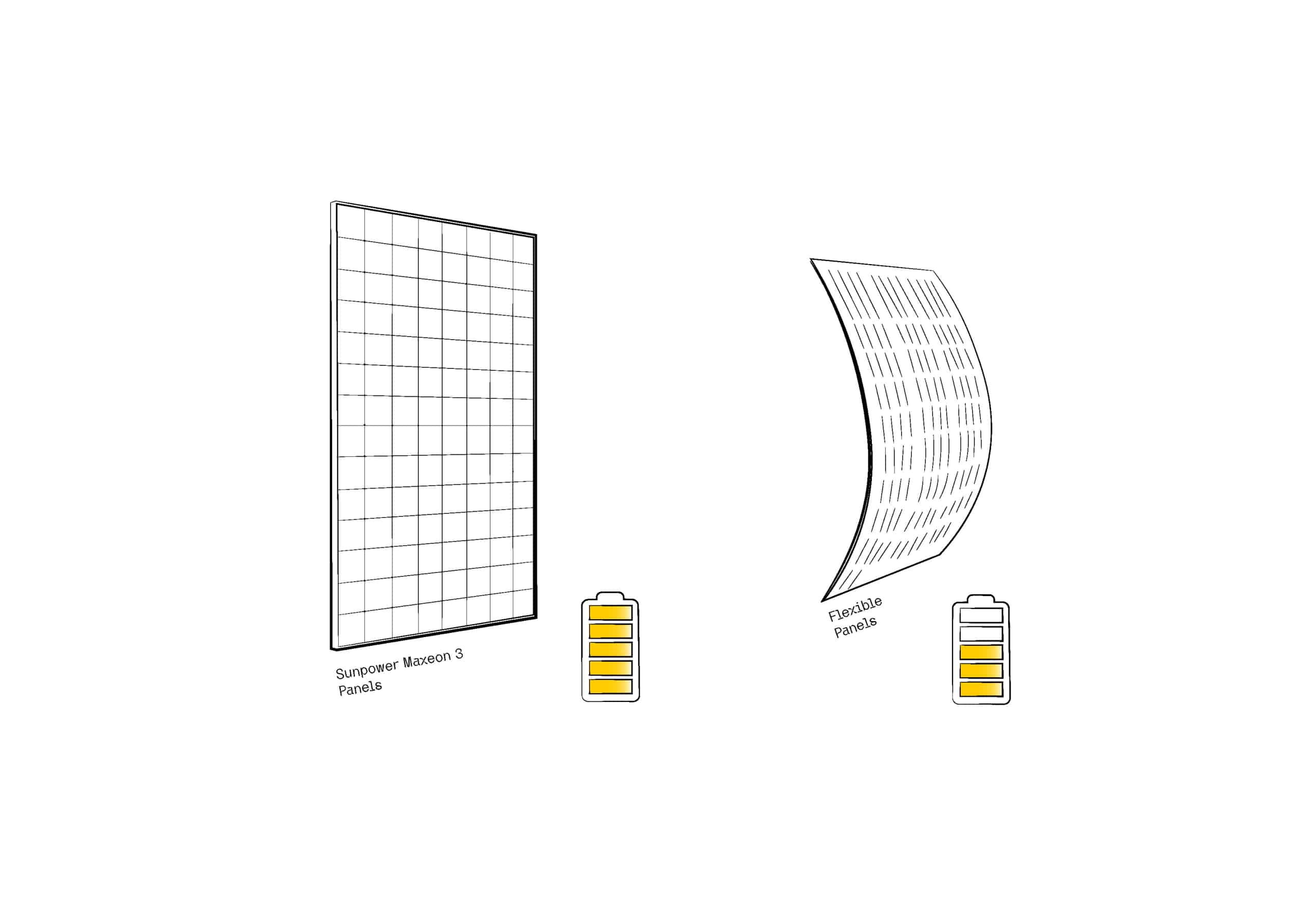
Market leading panels
The rigid glass solar panels used on our yachts offer market leading efficiency and 40 years of warranty. Flexible panels mounted on curved surfaces or integrated into the hull of a yacht are generally less efficient, prone to output reducing microcracks and have a much shorter lifespan with a warranty time of only 2 years.
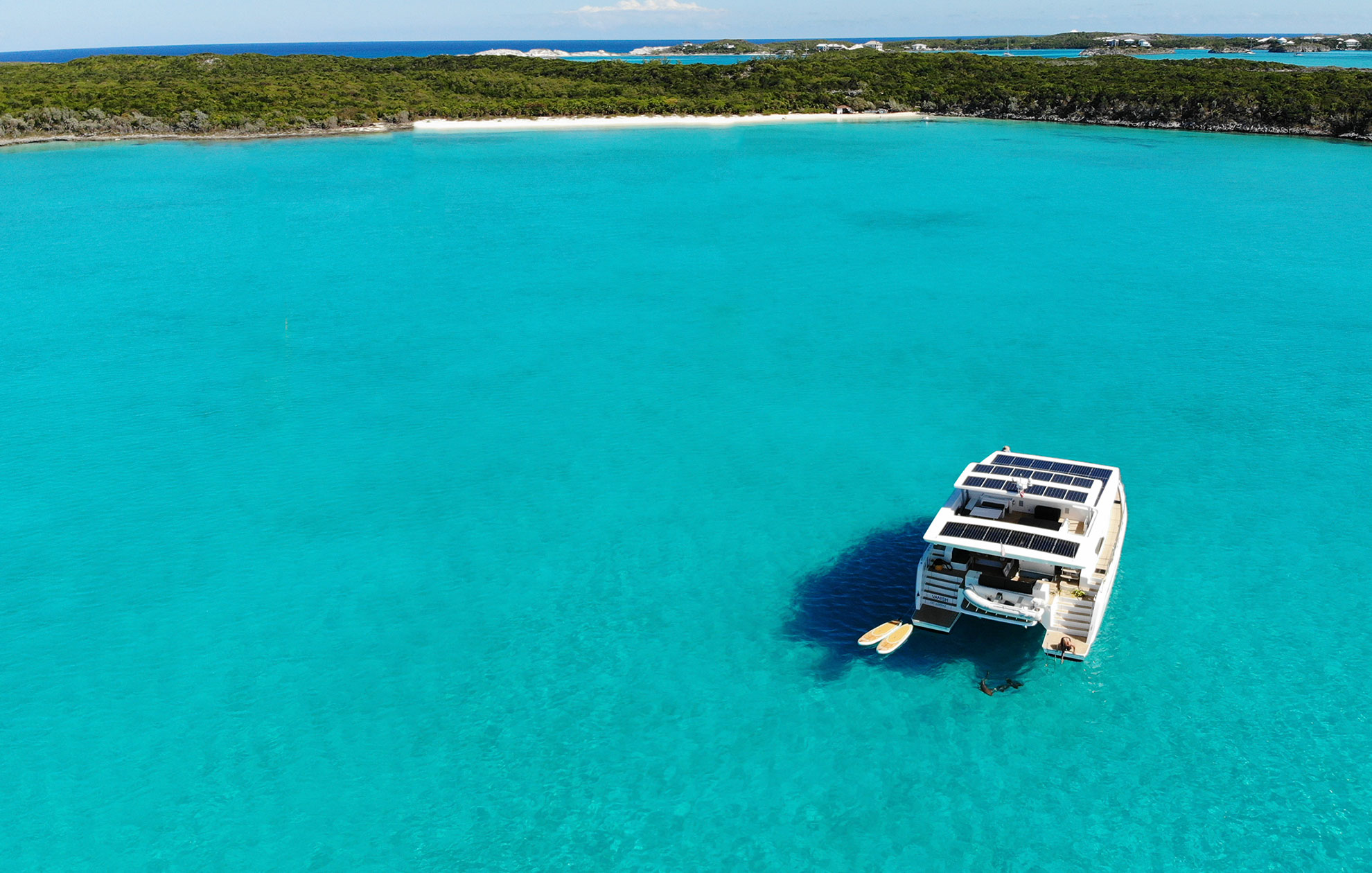
Decades of research, development, optimizing and successfully delivering the full solar yachting experience have put us in a position to lead the industry towards a clean, electric future.
Industry-leading expertise
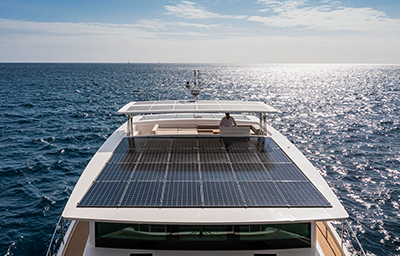
Purpose Built Vessel Concept
Silent yachts are not conversions of existing boats, but are designed in-house from a white sheet of paper to deliver an uncompromised solar powered experience.
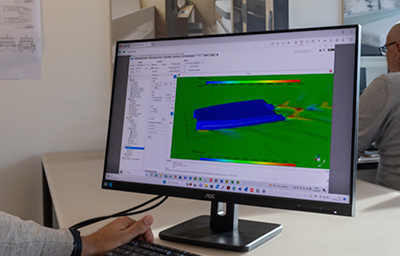
In-house Engineering Department
Our dedicated team focused on innovation, design as well as R&D makes sure we develop cutting-edge solutions which can be implemented rapidly.
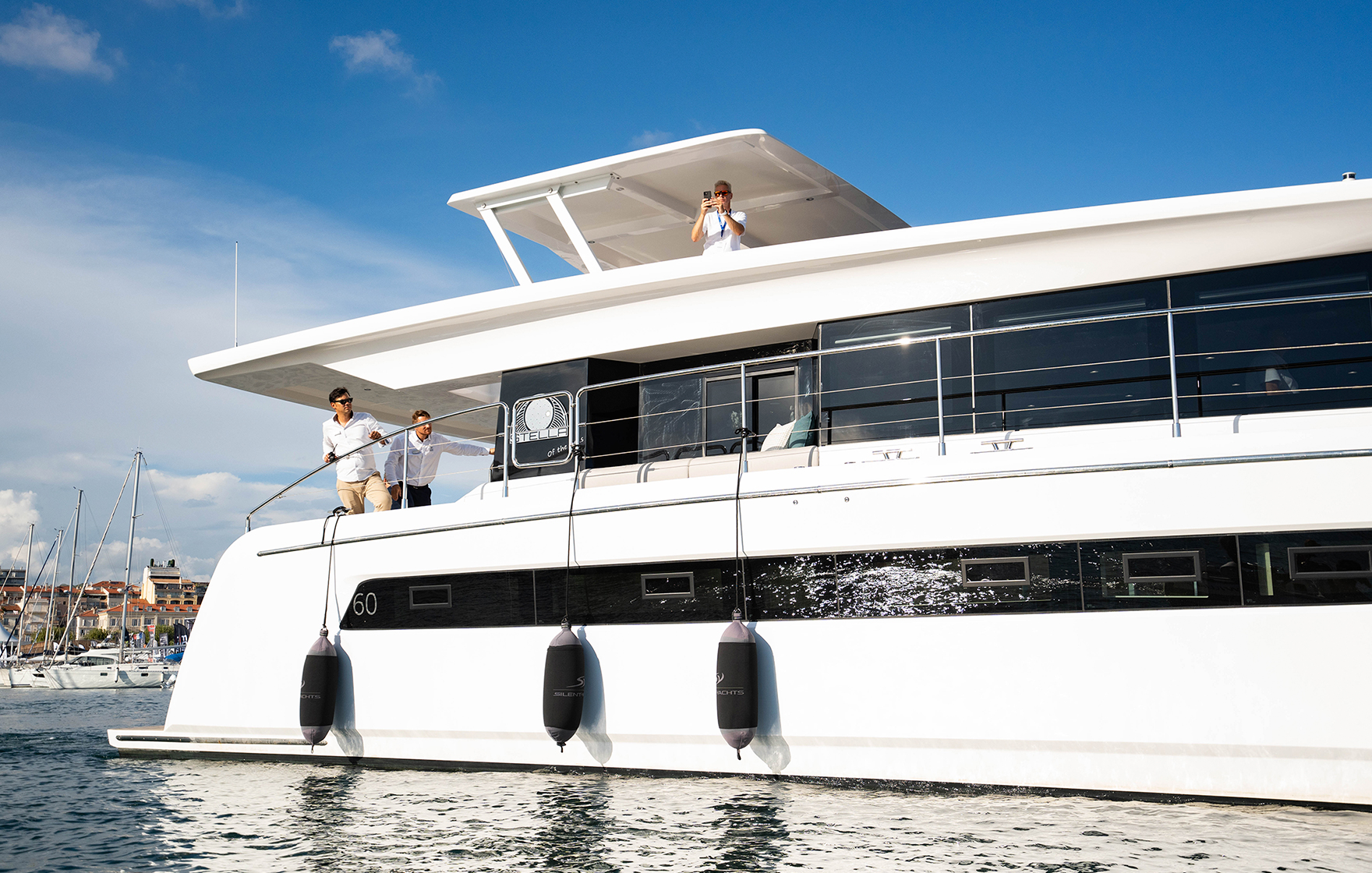
Proprietary Drivetrain & Software
The proprietary drivetrain as well as the software that runs all energy harvest and storage systems is designed, developed and engineered by our own in-house technicians.
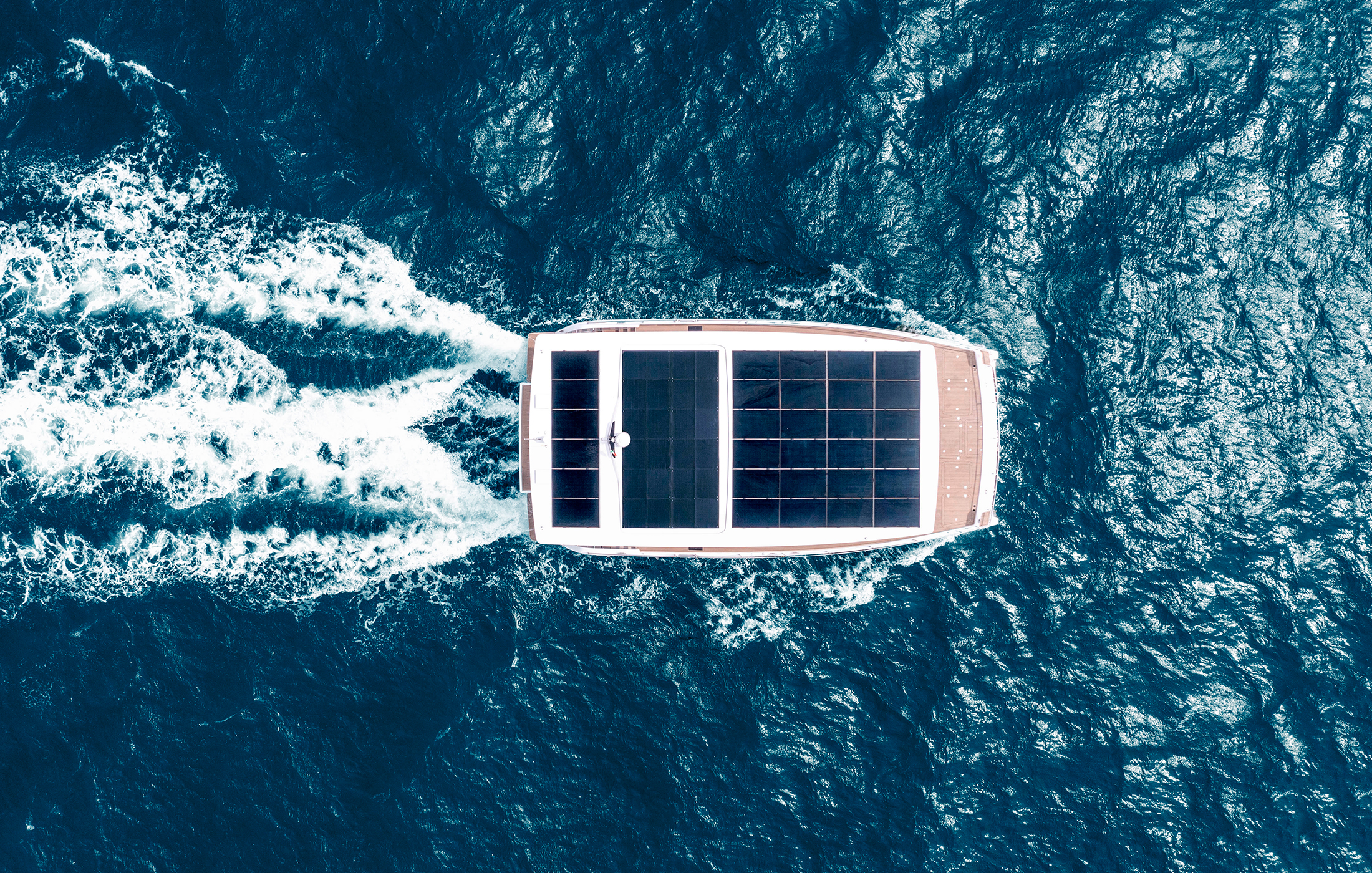
Performance Optimization
Every single detail of the hardware and software components of our Silent Drivetrain are fully optimized to integrate seamlessly and perform at maximum efficiency.
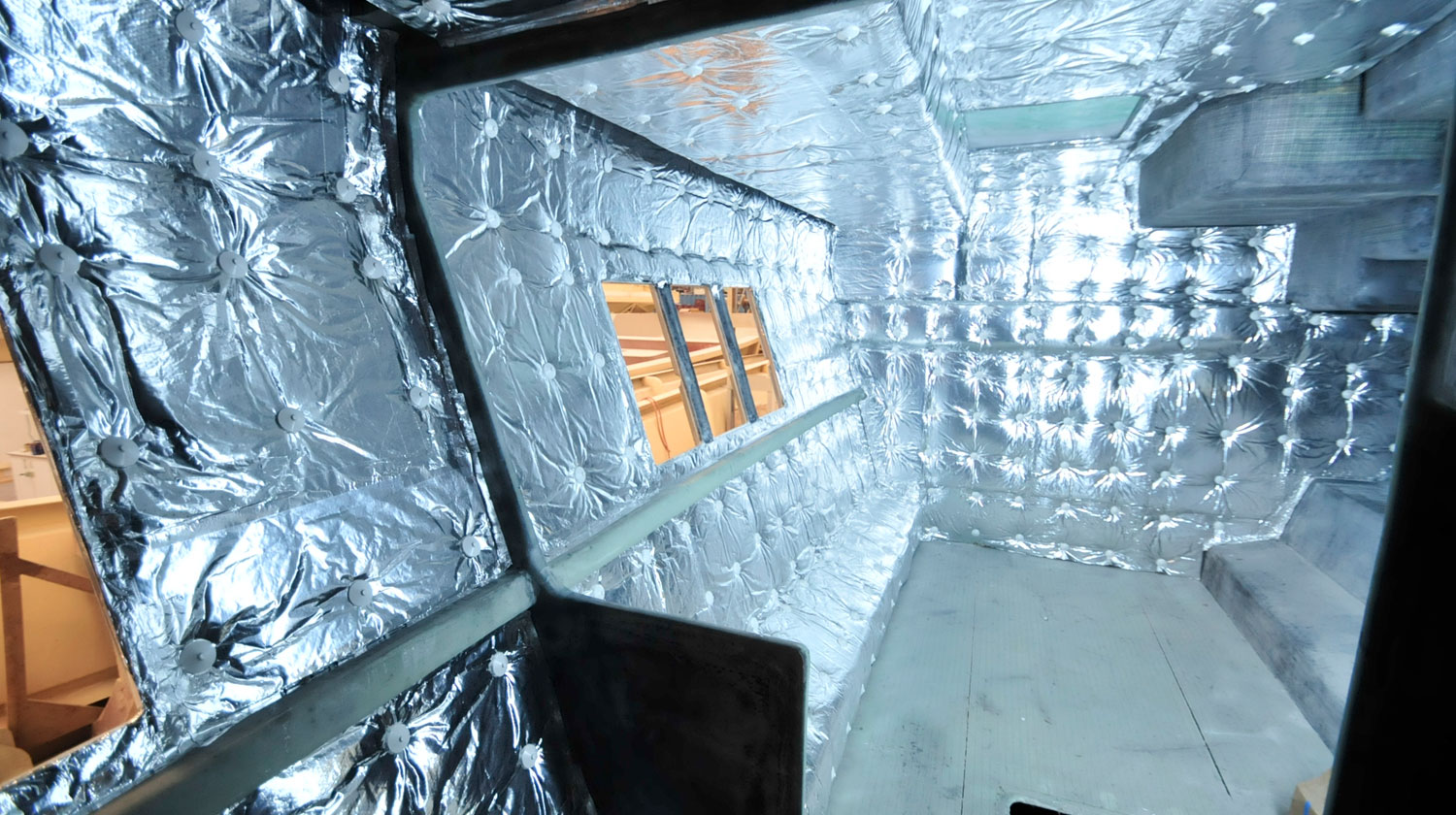
Complete Thermal Insulation
The electric yachts of Silent are the only models in their class which insulate hull deck and superstructure to ensure maximum energy efficiency during heating and cooling.
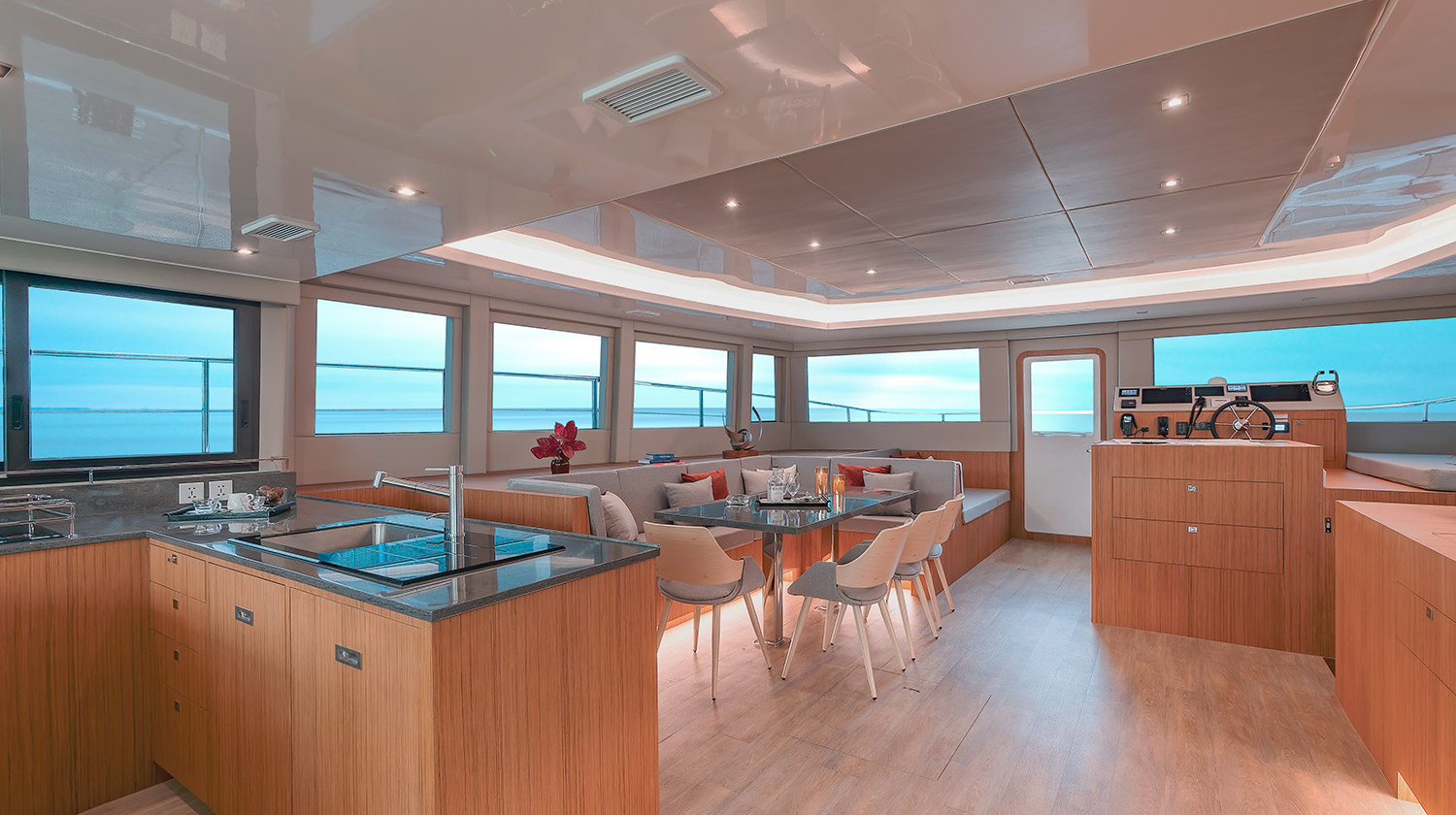
Custom Air Conditioning System
The A/C system we developed for our catamarans has energy recuperation as well as heat pumps for hot water heating and is industry leading in terms of its efficiency.
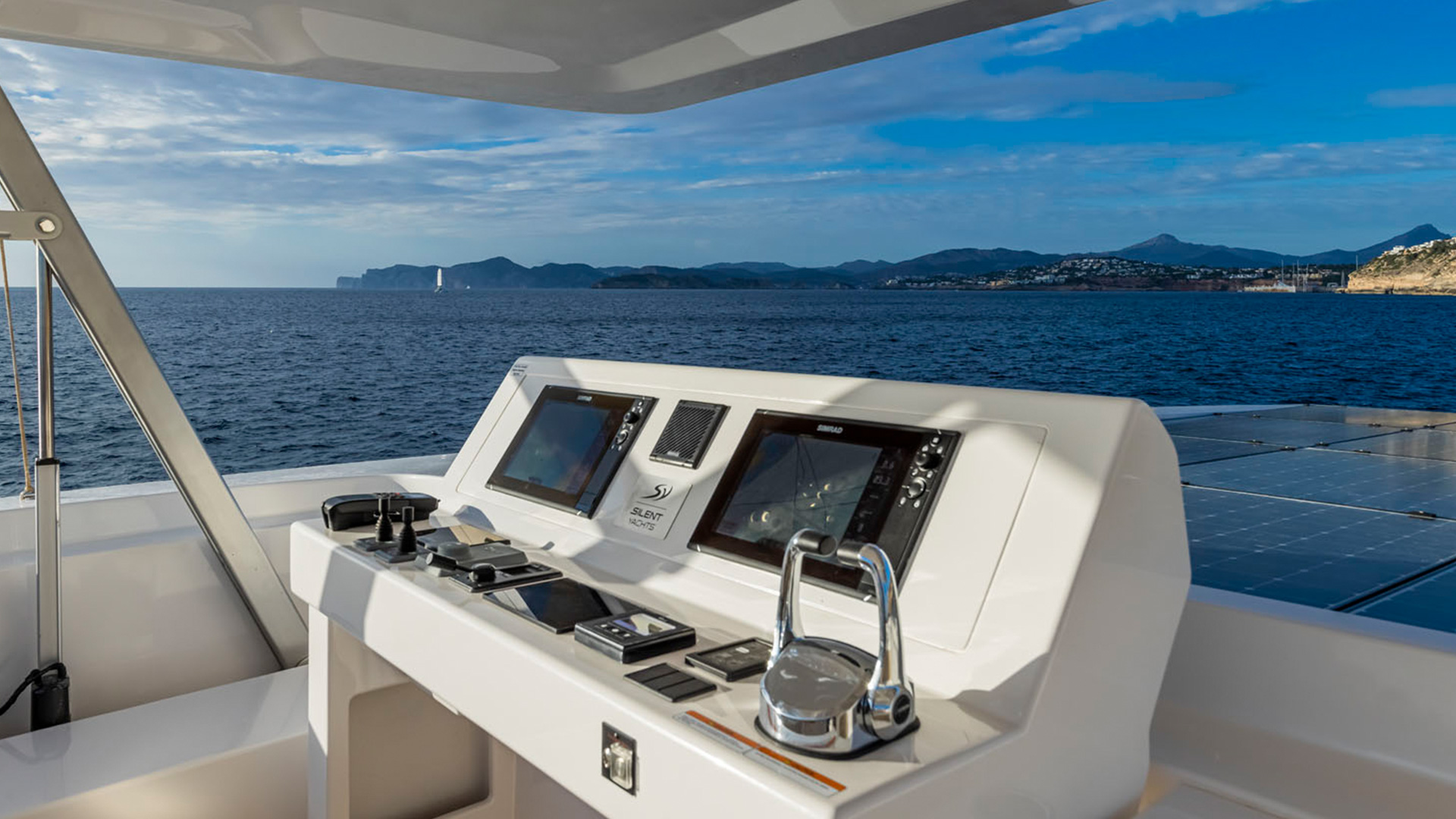
Autonomous System Design
All systems and components on a Silent yacht have been optimized to ensure compound efficiencies that enable unlimited range and ultimately autonomous yachting.

Construction & Craftsmanship
We build our boats in our own yards under strict quality control parameters using the best possible methods and materials.

Bespoke Design & Build
Every one of our yachts is unique. We pride ourselves in incorporating customer specific requirements, while keeping true to our high performance principles.

The ability to easily replace key hardware components such as the solar panels and batteries provides the unique opportunity to upgrade and improve every Silent with future technology.
Upgradable modular platform
At Silent we feel passionately about avoiding built-in obsolescence. This is the driving principle of so many industries, that produce one model in the full knowledge that a later model will supersede it, encouraging the buyer to replace their car, boat, plane, mobile phone for the newest, latest and greatest.
In our view, built-in obsolescence does not work in harmony with nature. Yachts are very commodity rich and costly things to make. Although Silent go to great extents to minimalise our carbon footprint and maximise use of recyclable resources, by far the most intelligent and environmentally friendly method of producing a vessel is to do so with hulls that are designed for solar purpose, efficiency and very long lifespan.
For this reason, every Silent is based on our signature modular platform design. This means that essential hardware components such as the solar panels, batteries and electric motors can be replaced with ease.
As result, our electric catamarans can be upgraded with the latest components years after they were launched into the water for the very first time, making sure the yacht always remains state-of-the-art.
This gives you a piece of mind, knowing that today´s Silent will always be tomorrow´s.
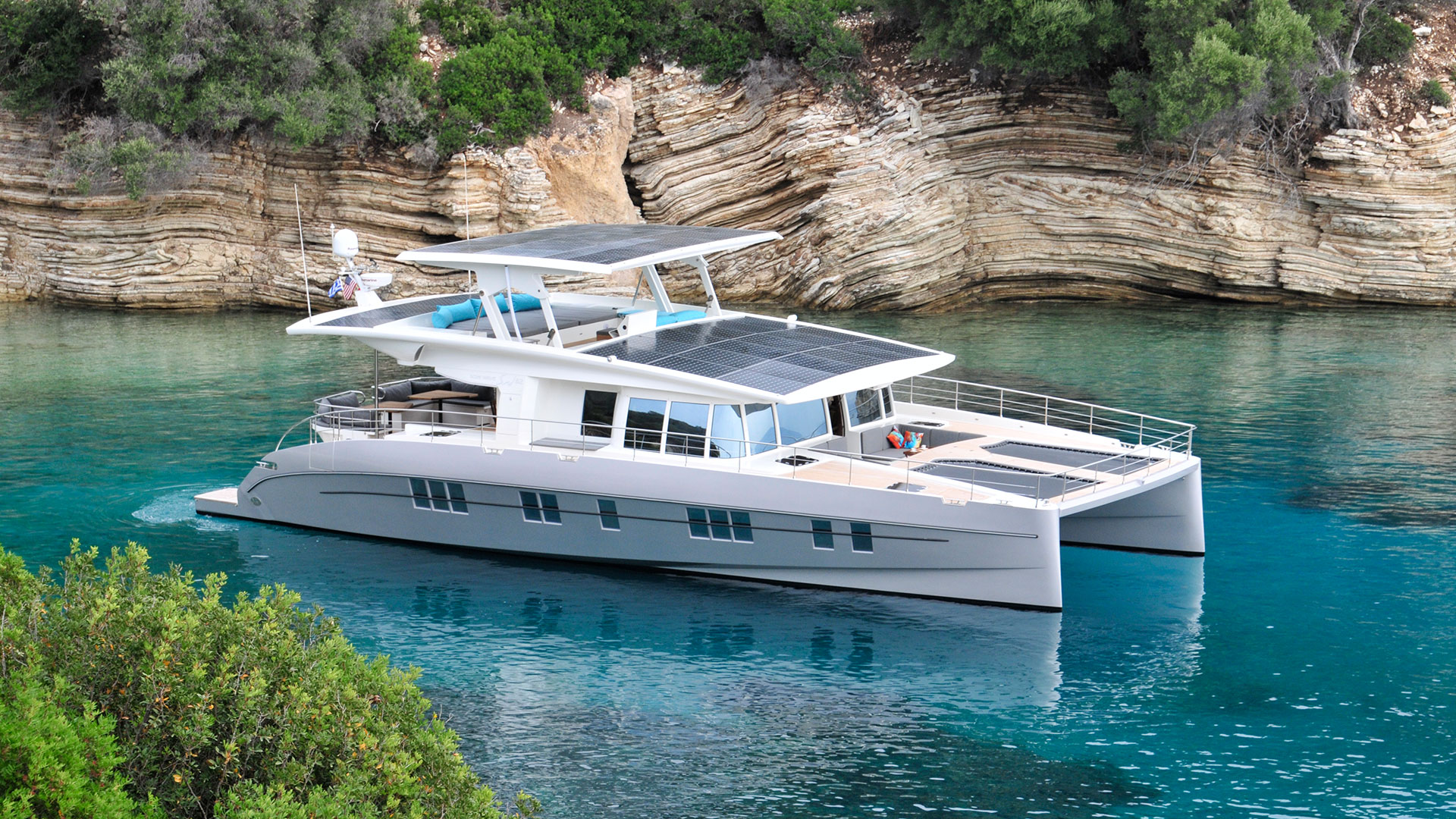
What makes her the most iconic solar yacht in the world
At Silent we have deep affection for the original Silent yacht: the Silent 64. Launched in 2016, this catamaran was the first series production fully solar powered electric yacht in the world. In 2018, she set up a world-record by becoming the first serially produced solar-powered bluewater catamaran to cross the Atlantic. Based on a fully solar optimized design, she back then combined our very best technologies with a philosophy aimed towards maximum efficiency. In that regard, her lightweight carbon fiber hull offers impressive performance even by current standards. Still in daily Silent R&D service today, this yacht is Silent’s elder. Filled with cleverness and like every Silent yacht, she has never let us down.
Silent Group
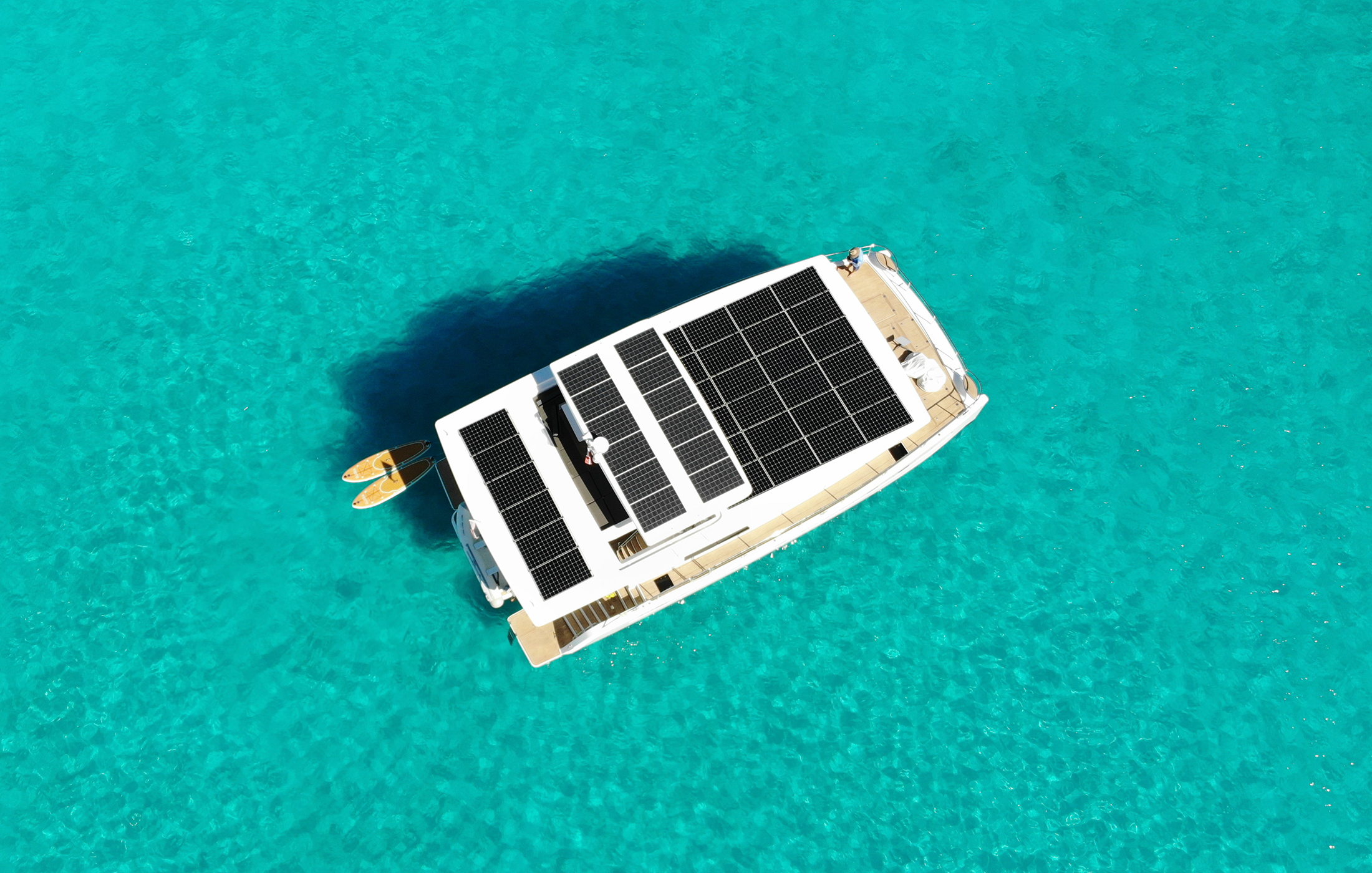
Our charters offer you the opportunity to book a memorable vacation on board of our electric yachts. Including our helpful crew, consisting of a captain and a chef, you will experience the comfort of solar powered yachting.
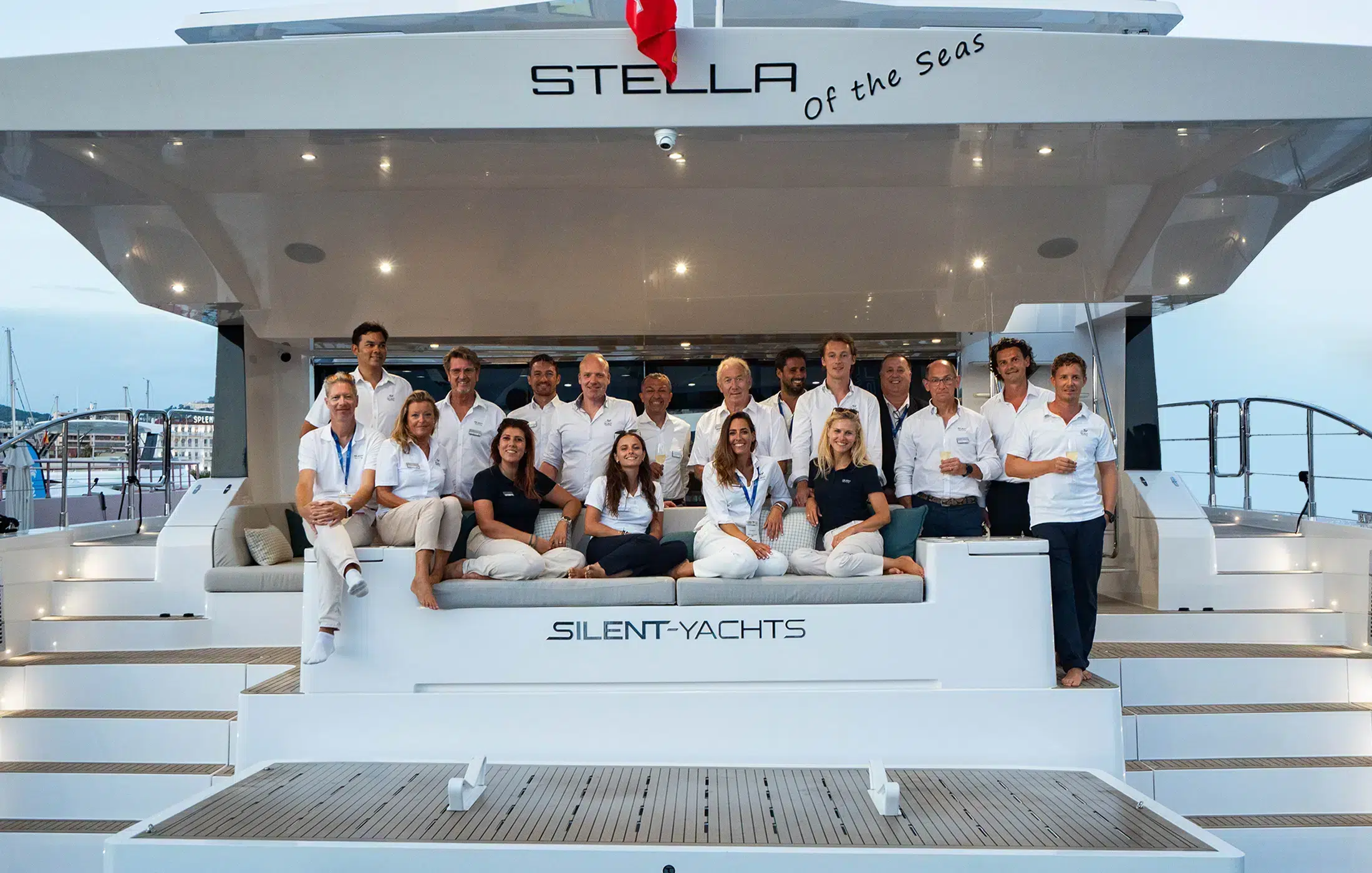
As the pioneers of solar yachting, we have almost three decades of experience regarding the research, design and build of electric yachts. Our team, shipyard and the hiring of new talent are the backbone of our operations.
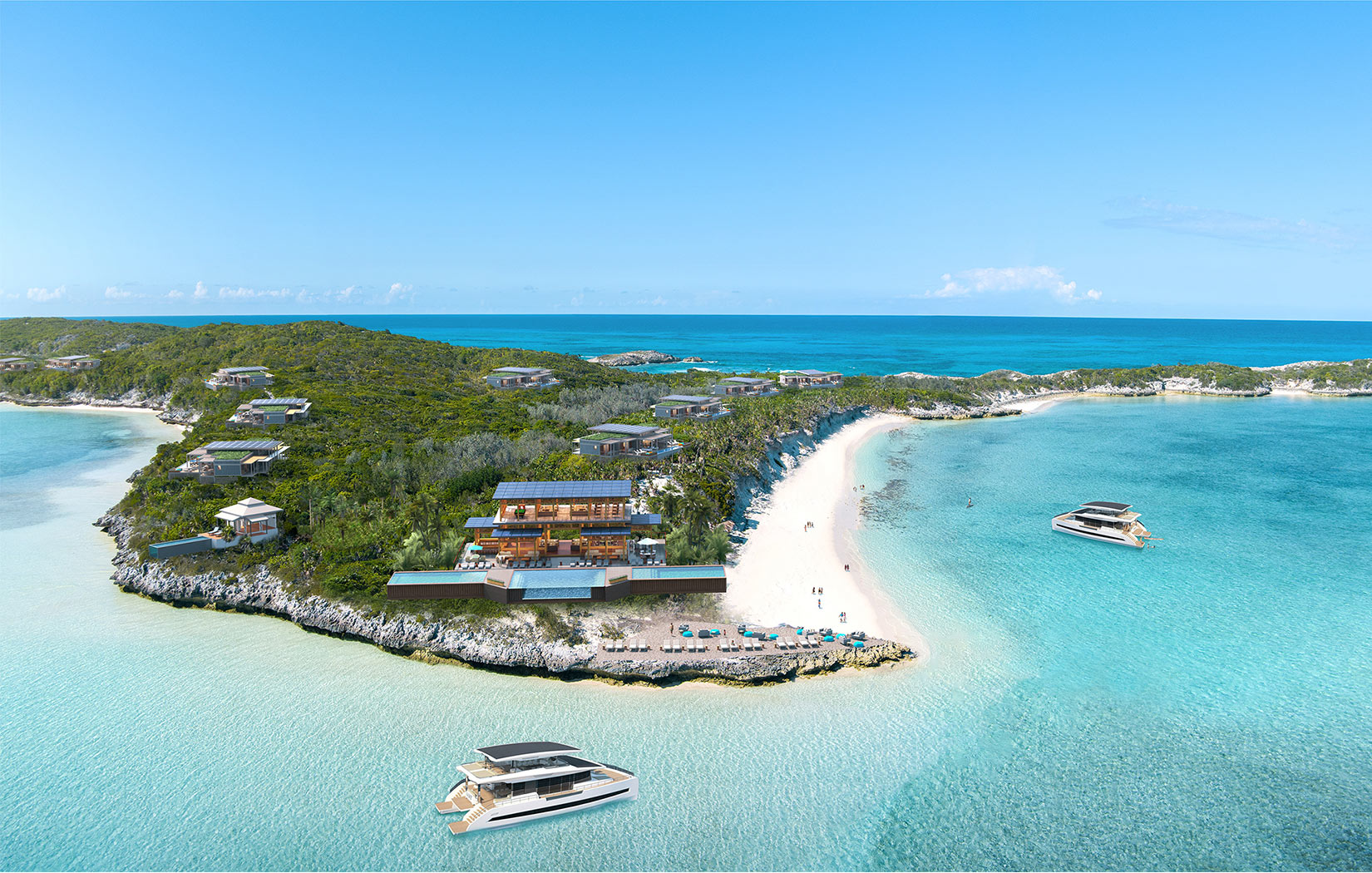
By transferring our solar yachting technology, Silent Resorts develops sustainable beachfront resorts in beautiful locations worldwide. Memberships offer full or part ownership of an eco-property and a Silent yacht.
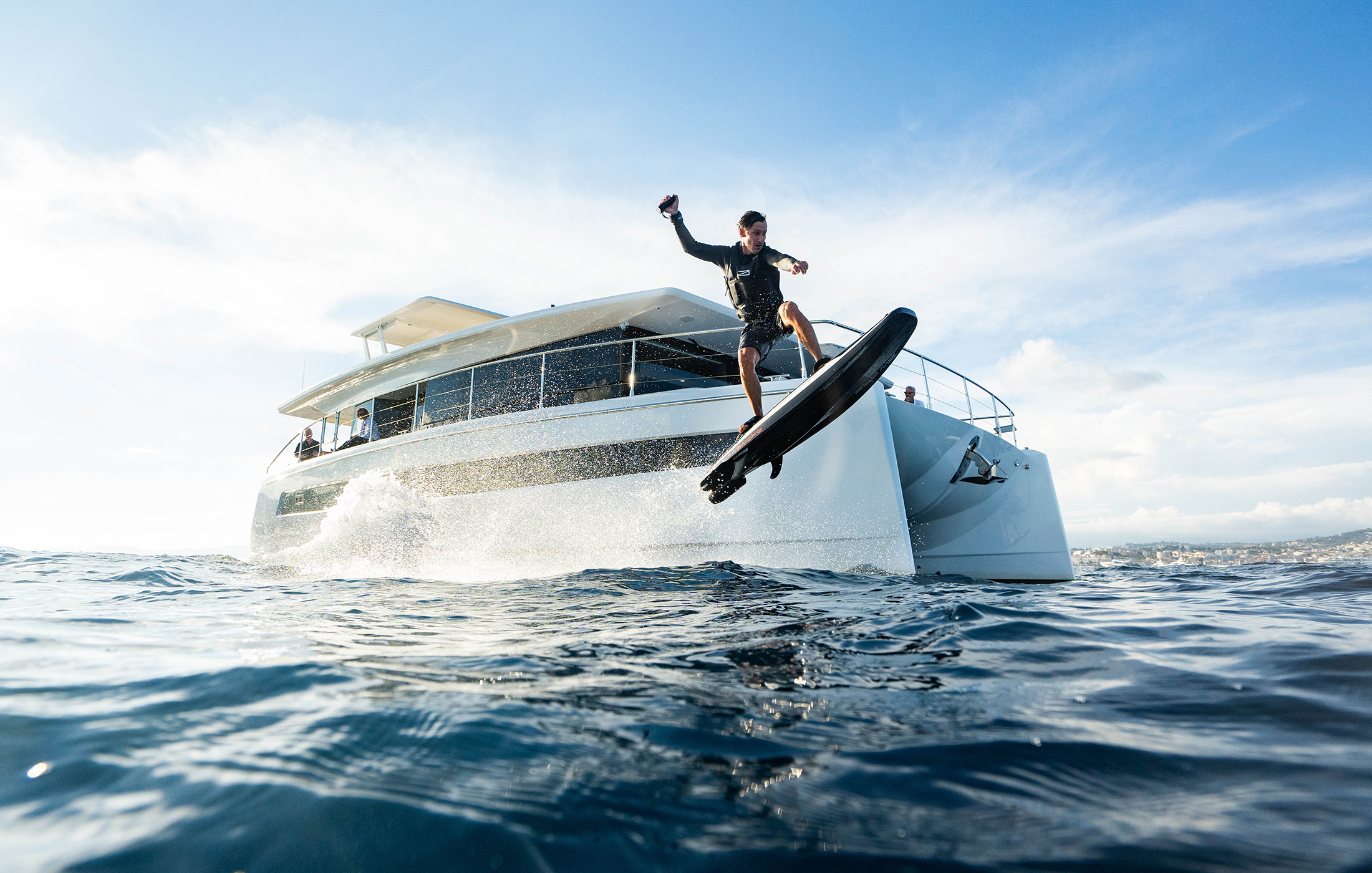
Create your infinite playground on the water. A selection of premium electric water toys, which can be recharged by simply connecting them to your Silent yacht, as well as other accessories for the ultimate experience on board.
672 Wine Club
- Motorcycles
- Car of the Month
- Destinations
- Men’s Fashion
- Watch Collector
- Art & Collectibles
- Vacation Homes
- Celebrity Homes
- New Construction
- Home Design
- Electronics
- Fine Dining
- Benchmark Wines
- Brian Fox Art
- Disneyland Resort
- Ka La’I Wakiki Beach
- Kalamazoo Grill
- Raffles Hotels & Resorts
- Sports & Leisure
- Health & Wellness
- Best of the Best
- The Ultimate Gift Guide
Sunreef’s New All-Electric Catamaran Blends Solar and Wind Energy for Unlimited Range
The vessel features a special "solar skin" that produces clean power., rachel cormack.
Digital Editor
Rachel Cormack's Most Recent Stories
This new superyacht line wants you to feel like you’re cruising in a sports car.
- Bulgari Is Heading to Watches and Wonders for the First Time Next Year
- The Most Interesting Suite in the World Might Be on This Luxury Train
- Share This Article

Sunreef Yachts has just started building what it’s claiming will be “the world’s most advanced sustainable luxury catamaran .”
The electric vessel, known as the Sunreef 80 Eco , blends the latest green technologies with the reliability of a day-sailer and the comfort of a superyacht. It was first unveiled last year as part of the Polish yard’s new Eco line that comprises a handful of vessels spanning from 40 to 100 feet.
Related Stories
The shipyard that built the ‘titanic’ has filed for bankruptcy.
- This Bonkers Space Balloon Just Completed Its First Full Test Flight
Designed and engineered in-house, the 80-footer takes a holistic approach to eco cruising. It can harness and store renewable energy both above and below the waterline, which means it can sail silently sans emissions for days on end. In fact, the yard says it has infinite range.
Arguably the most innovative feature is the vessel’s solar skin. This photovoltaic system will see the world’s lightest solar cells integrated into the hull sides, superstructure, bimini and carbon mast. Covering a total surface of approximately 1,600 square feet, the skin will generate up to 34 kWp of clean energy that will be stored in custom-engineered lithium batteries. It also gives the multihull a cool, futuristic look.

The vessel’s solar skin can generate up to 34 kWp of clean energy. Sunreef Yachts
When it comes to propulsion, the cat takes a multipronged approach. It can either run on its two, energy-efficient 180kW electric engines or the wind. While under sail, the vessel employs an advanced hydro generation system to actually recover energy from the propeller rotation. Together, the two propellers can generate more than 15 kWh while sailing around 7 knots. This energy is then used to power the engines and onboard appliances.
“The Sunreef 80 Eco is all about responsible sailing and relying on renewable energy,” Sunreef’s founder and president, Francis Lapp, said in a statement . “We are now pairing the industry’s most innovative solar power system with hydro generation.”
The vessel also sports a high-tech water management system, highly efficient air conditioning, wind generators and non-toxic bottom paints. As for décor, it’s fully customizable and showcases a range of ethically sourced sustainable materials and furnishings.
Intended for long offshore adventures, the Sunreef 80 Eco is expected to hit the water this summer.
Check out more images of the vessel below:

Sunreef Yachts

Rachel Cormack is a digital editor at Robb Report. She cut her teeth writing for HuffPost, Concrete Playground, and several other online publications in Australia, before moving to New York at the…
Read More On:
- Electric Yacht
More Marine

This New Catamaran Concept Was Designed to Carry Your Bugatti Across the High Seas

Meet Spitfire, a New 164-Foot Superyacht Based on a High-Performance Patrol Boat

Meet the Wine Club That Thinks Differently.
Receive editor-curated reds from boutique California producers four times a year.
Give the Gift of Luxury
Latest Galleries in Marine

Tribale 120 Gran Turismo in Photos

Spitfire Superyacht in Photos
More from our brands, why apple intelligence matters to fashion, coach prime hype peters out as colorado’s tv ratings crater, olivia wilde wrote to charli xcx after watching her ‘incredible’ audition tape for ‘i want your sex’ film: ‘you’re a brilliant actress’, a new edition of john elderfield’s ‘frankenthaler’ shows an artist with real new york chutzpah, the best yoga mats for any practice, according to instructors.

- Green Propulsion
- Renewable Energy
- Energy efficiency
- Sustainable materials
- Eco Insights
- News & Events
- Sunreef News Magazine
- Press About Sunreef

- 60 Sunreef Power
- 70 Sunreef Power
- 80 Sunreef Power
- 100 Sunreef Power
- Sunreef Ultima Range
- Sunreef 44 Ultima
- Sunreef 55 Ultima
- Sunreef 66 Ultima
- Sunreef 77 Ultima
- Sunreef 88 Ultima
- Sunreef fleet

- Sunreef Zero Cat
- Sunreef 100
- Sunreef Fleet

- Sunreef 35M
- Sunreef 43M
- 49M Sunreef Power
- 210 Sunreef Power Trimaran
- Sunreef Explorer
- 40M Sunreef Explorer
- 40M Sunreef Explorer Eco
- 50M Sunreef Explorer
- Superyachts Fleet
The Revolutionary Electric Catamarans Introduce Zero Emission Cruising

With greater awareness about pollution, sustainable and emission reduction practices have become increasingly salient in the maritime industry. The International Maritime Organization envisions a reduction in CO2 emissions by 40 percent by 2030 across international shipping to combat climate change.
The nautical sector has found a promising solution with the invention of electric catamarans. These vessels are powered by electrical energy, offering a more ecological, energy efficient, and environmentally friendly alternative to traditional cruising.
Making The Switch to Electric Catamarans
Electric catamarans are propelled by electric motors that draw power stored in lithium-ion batteries. These massive batteries are replenished by solar panels, wind turbines, hydrogenators, or a combination of all, allowing electric catamarans to ply oceans with an extended range.
Sunreef Yachts Eco remains at the forefront of eco-friendly responsible yachting with their electric sailing and power catamarans . The shipyard has made impressive strides in pursuing green energy generation for sailing the blue waters, including the installation of battery banks of the future and utilization of renewable energies.
What Makes Electric Catamarans Convenient?
1. questing for unpolluted waters.
Did you know that one litre of oil is capable of polluting one million litres of water ? What is more is that catastrophic oil spills only account for five percent of the total water pollution, the rest of the major chunk is avowed against engine emissions, oil leaks, and refueling from waterborne vessels. This oil contains hydrocarbons and heavy metals that damage the aquatic environment and adversely affects human health.
To avoid contamination, eco-conscious yacht builders and manufacturers, like Sunreef Yachts Eco, have launched electric catamarans that are less likely to harm wildlife or water users. With electric catamarans, there are no risks associated with spilling fuel as they need not make their way to an oil pump for replenishing.
Apart from rising concerns of water pollution, the traditional marine outboard engines are also known to have detrimental effects on marine wildlife due to the noises generated. This noise impacts breeding cycles, hinders navigation of partially sighted animals, and prevents fishes from hearing their predators. As counterparts, electric engines boast quieter operations, thus minimizing adverse effects on wildlife and making the voyages more pleasurable for yachting enthusiasts.
2. Greater Environmental Sustainability
An electric catamaran’s engine contributes significantly to a reduced carbon footprint that combats climate change effectively without releasing exorbitant levels of toxic pollutants, such as carbon monoxide, hydrocarbons, and nitrogen oxides, which deteriorate air quality.
3. Energy Efficiency
Electric propulsion systems tend to be more energy efficient than the traditional internal combustion engines. This is because the extraction of fossil fuels from deep within the Earth, refinement, transportation via great distances, and distribution to oil pumps, accounts for a staggeringly high consumption of energy.
Additionally, the overall energy efficiency of a diesel engine is often capped at 40 percent; the rest of the 60 percent is lost in the name of heat and friction. On the other hand, electric catamarans can be charged directly from the grid, providing renewable electricity, to be more environmentally friendly. This accounts for lower operating costs overall.
Sunreef Yachts Eco employs the latest in yacht building technology to ensure efficient power distribution and hull form. The lightweight hull of our electric catamarans guarantees instant power with little to no drag, resulting in least possible wasted energy.
4. Lower Maintenance Cost
Electric catamarans require relatively lesser maintenance as they boast fewer moving parts that use low friction magnetic field for operations and experience close to zero vibrations compared to internal combustion engines. They eliminate the need for winterization maintenance, oil changes, and filter, gaskets, or impeller replacements.
Alongside this, replacing greenhouse gas emitters, such as petrol and diesel, is certainly more economical. This also accounts for electric catamarans having a greater resale value on the market.
Understanding The Role of Marine Batteries
The primary reason why consumers avoided plowing waters with electric catamarans back in the day was the limited range that made variable sea states hazardous. What made the situation worse was their slow charging abilities at limited marinas around the world.
However, the electric catamarans of today offer smooth and silent operations, excellent maneuverability, and emission-free functioning. Additionally, they have torque from the second their shaft is engaged, enabling them to accelerate faster than conventional internal combustion engines.
Sunreef Yachts Eco envisions a more carbon neutral future for its catamarans. But apart from reducing emissions, the shipyard is also determined to find ways to significantly improve performance, range, and comfort onboard.
The Batteries on Sunreef’s Electric Catamarans
Sunreef Yachts Eco fully electric catamarans are equipped with custom engineered marine battery banks that offer prolonged battery life and more power despite compact size and optimized weight. With a density below 5.2kgs per kWh, these lithium-ion battery packs are recognized as 30 percent lighter than standard battery systems used worldwide. The reduced weight of the battery accounts for lesser drag, which translates to reduced energy being consumed by propulsion.
Additionally, the battery size is also smaller, leaving more room in the hulls to expand on living space. The ability to charge the batteries of this electric catamaran in harbors across the world, regardless of the voltage, adds a unique level of versatility and convenience for cruising.
It is important to note that Sunreef Yachts Eco equips each model within its range with custom marine lithium battery banks, scaling between 400 to 700V with pack sizes extending up to 1MW. Their capacity allows for nearly two days of air conditioning and house appliances use. These are fast charging, long-lasting batteries with a lifespan of up to 10 years; but even after years of service, 80 percent of the original capacity is maintained.
The Utilization of Renewable Energy on Yachts
Energy regeneration onboard an electric catamaran allows them to have an unlimited range without relying on external fuel sources, making them fully self-sustaining. Installing a clean green energy production to the catamaran’s existing battery pack makes it far easier to run the essential electric components onboard.
Renewable energy produces no GHG (greenhouse gas) emissions despite powering the world’s growing fleet of electric catamarans. To protect the oceans, here are the three major renewable energy types that can be harnessed onboard an electric catamaran:
1. Solar Power
The utilization of solar energy on electric catamarans has proven to be a significant step in decreasing the consumption of environmentally damaging fossil fuels such as gasoline. Sunreef Yachts Eco has successfully produced its in-house engineered, patent pending technology, solar panels that can be fully integrated into the composite bodywork of the electric catamaran. The energy produced is stored in lithium-ion batteries.
These are the industry’s lightest solar panels, that can be mounted on the superstructure, hull, or mast, for maximum power generation. In general, multihulls offer a more stable platform for accommodating a large solar array in comparison to monohulls.
2. Marine Wind Turbines
Marine wind turbines (also known as wind generators or wind chargers) are mounted atop catamarans to maximize the conversion of kinetic energy of air in motion to electricity. This in turn keeps the battery banks charged in the absence of solar power; hence playing a vital role in the energy mix of electric catamarans.
It is generally a stable source of power throughout the day, regardless of whether the vessel is docked or under navigation. That being the case, the more wind pressure the catamaran encounters, the more power the turbines produce. Overall, wind turbines significantly reduce operational costs by minimizing fuel consumption.
3. Hydro Generation
Hydro generation allows you to create power whilst sailing in an electric catamaran. Simply put, harvesting the momentum of waves converts kinetic energy into electrical energy, which can later be fed into batteries to supply electricity to the ship.
Sunreef Yachts Eco redesigned their sailing catamarans to draw power from the energy of waves rather than fossil fuels. Because regeneration can even come from the free spinning of propellers when the boat is under sail, it proves to be a viable method for procuring clean, green energy. Additionally, it has proven to be highly efficient on electric catamarans produced by the shipyard as the electric power can be recovered from two engines.
How Innovative is Sunreef Yachts Eco?
During recent years, the Polish shipyard , Sunreef Yachts Eco has grown increasingly aware of the urgency of protecting the environment. Our research and development team has launched ground-breaking inventions in the yachting industry with greener tech, efficient design, and cleaner manufacturing processes.
Air Conditioning
For starters, electric catamarans from Sunreef Yachts Eco are the only ones to boast an energy-saving, gas-based air conditioning system, providing notable energy efficiency for a sustainable yachting experience.
This system consumes 70 percent less energy than the standard air conditioning system. Not only is it capable of running on batteries throughout the night to guarantee a peaceful sleep onboard, but also provides top-notch humidity control in tropical regions.
Smart Water Management
Because freshwater generation is crucial for sustainable cruising, Sunreef Yachts Eco installs advanced water purification systems and highly efficient watermakers onboard electric catamarans. This guarantees unlimited access to clean water which reduces the need for plastic bottles onboard.
Another ongoing project by the research and development team at Sunreef Yachts Eco is the Zero Cat , a 90 feet catamaran with unique clean, green power generation capabilities. This superyacht ’s fuel cell system will convert methanol to hydrogen onboard for zero-emissions cruising.
Sunreef Yachts Eco also aims to be the first shipyard to incorporate hydrogen on its electric catamarans as a substitute to conventional energy. Combining hydrogen power with electric propulsion would enable the 80 feet sailing catamaran to achieve unrivalled autonomy for eco-conscious cruising as it powers both onboard appliances and engines.
Future Plans
The idea encapsulated here is to continue making sailing more accessible for people around the world, but with minimal impact on seas and oceans. Sunreef Yachts Eco aims to commission 40 electric catamarans in 2024 that embrace latest propulsion technologies such as electric motors, advanced lithium-ion battery chemistries, and regeneration capabilities that rely heavily on renewable sources of energy to help protect the planet.
Frequently Asked Questions
Who makes electric catamarans.
Sunreef Yachts Eco is the world’s leading designer and manufacturer of electric catamarans, including both sailing and power multihulls. The shipyard is largely known for its production of bespoke luxury catamarans, stretching between 30 to 164 feet.
What is the range of the electric catamaran?
Sunreef Yachts Eco electric catamarans boast an unlimited range under favorable and sunny weather conditions. They are easily maneuvered, seaworthy vessels, with impeccable buoyancy even in rough seas. Featuring a mix of eco-energies, our electric catamarans also prove to be self-sustaining for extended periods of time.
Are there any electric powered catamarans?
In recent years, Sunreef Yachts Eco has launched several electric catamarans, powered by renewable energies for minimum ecological footprint. Furthermore, the shipyard has committed to 40 additional electric catamarans which will be launched in 2024, which includes multihulls from the newest range, the Sunreef ULTIMA .
EXPLORE OUR ELECTRIC CATAMARANS
Ultima range, previous post sunreef yachts and rosberg x racing renewed partnership, next post recharge at sea: solar catamarans harness sun-powered serenity.
Comments are closed.
SUBSCRIBE TO OUR NEWSLETTER
- Sailing Yachts
- Power Yachts
- Superyachts
- Making a Change
- Green Concept
- Energy Efficiency
- Sustainable Materials
Copyright © 2024 Sunreef Yachts . All rights reserved.
- Whistleblowing
- Privacy Policy

Sunreef Venture S.A.
Sunreef Yachts Shipyard
ul. Tarcice 6
80-718 Gdańsk, Poland
+48 58 769 77 77
- THE PRINCESS PASSPORT
- Email Newsletter
- Yacht Walkthroughs
- Destinations
- Electronics
- Boating Safety
- Ultimate Boating Giveaway

The All-Electric Yacht Evolution
- By David Schmidt
- January 13, 2022
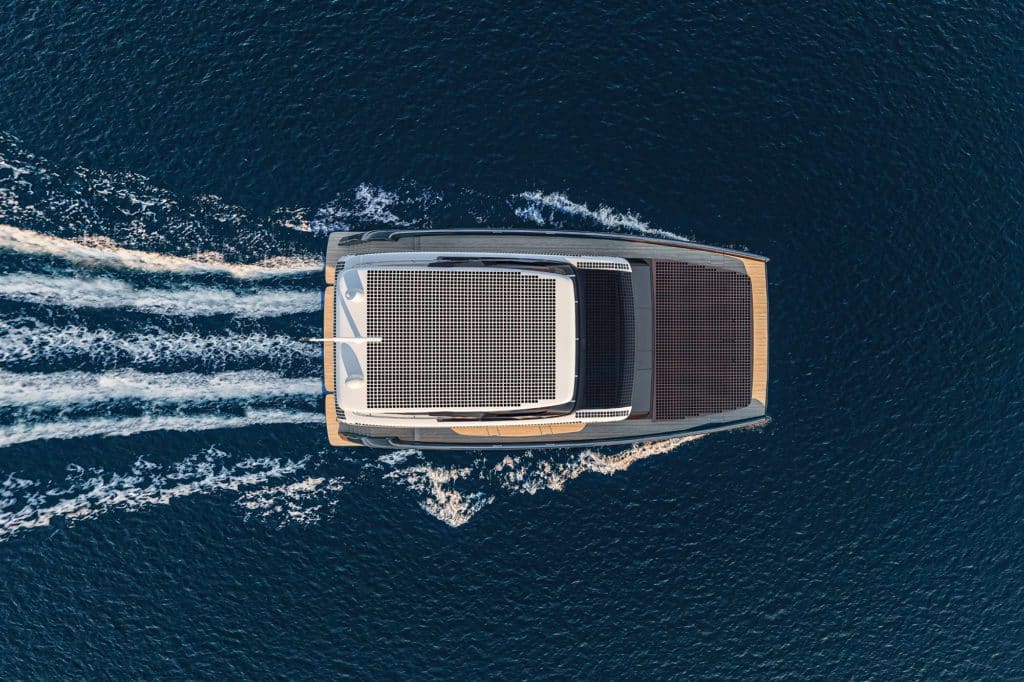
The powerboat drivers idle near their starting lines off Monaco, waiting for the signal to punch the throttles. But they’re different from those who have raced here since 1904: These nine boats are competing in the Solar Class at the 2021 Monaco Energy Boat Challenge.
Every July, the Monaco Yacht Club organizes this race, which features next-generation technologies. This year, after five days of competition—including a 16-nautical-mile-lap race, slalom racing and a championship race—the Dutch-flagged Sunflare solar team claimed top honors in the sun-powered class.
Is their boat’s top speed of about 29 knots going to break any world speed records? No. But the Monaco Energy Boat Challenge is a harbinger of recreational boating’s not-so-distant future.
That future, of being carbon-free, has been a long time coming. German inventor Moritz von Jacobi created an early electric boat in 1839, a 24-footer that could carry 14 passengers at roughly 2.6 knots. In 1882, Anthony Reckenzaun, an Austria-born electrical engineer, built Electricity , a steel-hulled launch with onboard batteries that was considered one of the first “practical” electric vessels. Other innovations continued until circa 1910, when Ole Evinrude’s gasoline-fired outboards began their own revolution.
Now, a century later, electric yachts harness technologies such as solar panels, electric drivetrains, lightweight construction in carbon fiber, lithium-based batteries and, in some cases, hydrofoils. These boats’ performance, comfort and range can rival some traditionally powered yachts—and they are clean and quiet. Much like Teslas, they sometimes also come with memorable acceleration curves.
Contemporary electric boats range in size and complexity. There are displacement monohulls such as Zin Boat’s 20-foot Z2T and Z2R and X Shore’s 26-foot Eelex 8000. There are hydrofoilers such as the upcoming Navier 27 (see sidebar). There are also boats like those contesting the Monaco Energy Boat Challenge, as well as bluewater cruisers with multiple hulls.
“The first advantage is space,” says Michael Köhler, CEO of Silent-Yachts . “Catamarans have more surface area, which benefits the number of solar panels that can be installed.”
Other advantages of multiple hulls in electric-boat design include increased form stability (no ballasted keels) and reduced drag. “This low resistance means they’re better suited for electric motoring, as they need a lot less energy to move than monohulls,” says Nicolas Lapp, Sunreef Yachts’ strategy consultant for research and development.
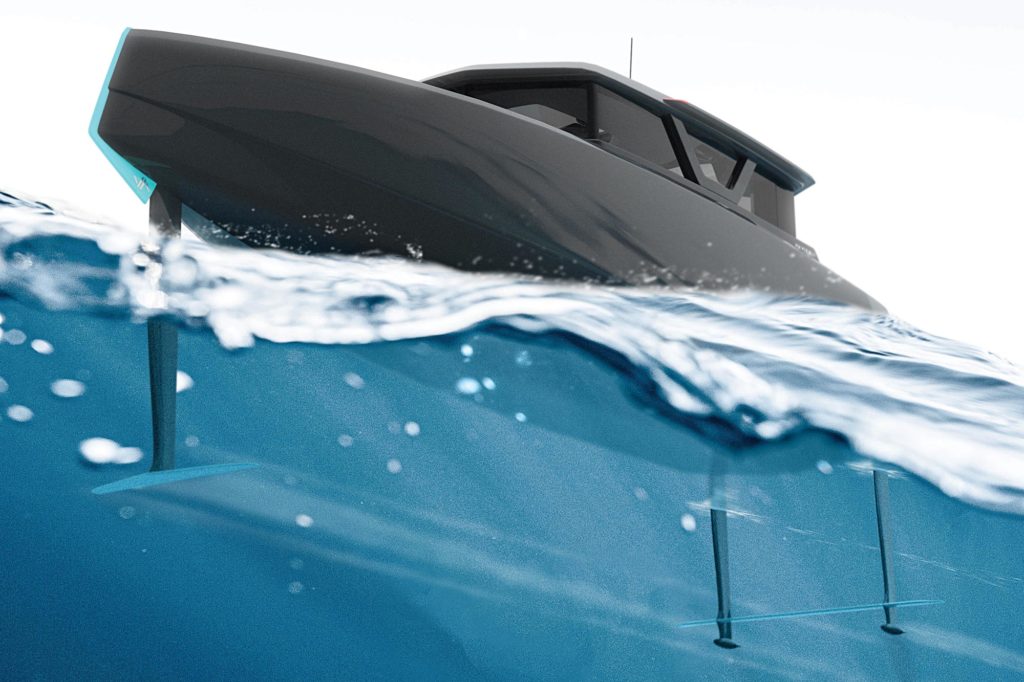
One key to reducing a yacht’s energy requirements involves reducing its displacement. “The lighter the yacht, the less energy is needed to move it,” Köhler says. “For this reason, our yachts are made of lightweight carbon fiber.”
While all of the yachts discussed in this article can be charged via shore-supplied AC power, cruisers typically want greater autonomy. To that end, Silent-Yachts and Sunreef Yachts use solar panels. The team at Silent-Yachts specs its panels from California-based SunPower, while Sunreef Yachts created the marine industry’s first flexible solar panels, which are flush-mounted on hulls, masts and superstructures.
Aesthetics matter in yachting, and not everyone wants to cruise aboard a solar farm. Here, Lapp sees an opportunity. “If you want sustainability to be cool and attract the attention of new generations, the appeal of the product is something you cannot neglect,” he says. “Seamless integration of the solar panels was a way for us to prove that sustainability [can] generate green power [and] cool looks.” (After all, no one buys a Tesla because it looks like a Chevy.)
While the Caribbean and Mediterranean are blessed with abundant lumens, other world-class cruising grounds—say, the Pacific Northwest—aren’t equally illuminated. Because of this, electric cruising yachts typically also include redundant systems to ensure that the navigation lights stay on without heading to a marina.
“Every Silent yacht is equipped with a backup generator,” Köhler says. “This makes sure you never run out of energy, even when facing longer periods of unfavorable weather conditions.”
Rainy-day alternatives can include other green-power solutions. Sunreef Yachts typically specs dual wind generators atop its yachts’ rooftops. However, Lapp is realistic about their capabilities.
“Wind turbines can only supply a small fraction of the energy that our solar panels can,” he says, explaining that, in the right conditions, Sunreef’s panels typically generate 40 times more juice than the turbines. “What’s nice about working with wind is that your generators work all the time.” That includes under navigation, at the dock and throughout the night.

Energy sources aside, these experts say that high-quality batteries offering high performance are critical. Larger-capacity battery banks ensure more power reserves, but adding them can affect a yacht’s performance.
“The weight of the battery banks is also an important factor, as it can reduce or increase the overall efficiency,” Köhler says.
Battery performance is also critical for electric-powered coastal craft. One example is X Shore’s Eelex 8000, which has a high-performance 225 kW electric motor and dual 63 kWh lithium-ion batteries that can be charged anywhere there’s a power socket, or supercharged using the same technology as electric cars.
“The batteries can be charged in five to eight hours with three-phase power plugs and one to two hours with superchargers,” says Elias Wästberg, X Shore’s project manager.
While superchargers don’t exist in the middle of oceans, builders of electric-powered bluewater boats have already done this math. Silent-Yachts says its power catamarans are built to offer transatlantic autonomy, but a lot depends on how the owner uses the boat to minimize energy consumption.
“During sunny conditions, a general rule of thumb is that cruising at 6 knots maintains a balance between consumption and production,” Köhler says. “This basically means unlimited range. …The main thing that owners can do to increase range is reduce speed and turn off any appliances.”
This begs the question: Do owners need to downshift their expectations for onboard comfort when going electric?
“There’s no need to make any sacrifices or closely monitor energy levels,” Lapp says. “A lot of energy saving is done automatically. For example, at night, the air-conditioning system focuses solely on selected areas and cabins. … It consumes 70 percent less energy than most systems.”
And should the battery banks get thirsty, there’s always the generator.
Cruising with zero emissions might be a selling point for some customers, but one need not squeeze trees to embrace yachting’s future. “Running costs and maintenance levels are much lower compared to regular-motor catamarans,” Köhler says.
Then, there are unquantifiable returns. “You get to enjoy the absolute luxury of cruising in total silence and without disturbing the marine life around you,” Lapp says, adding that this experience helps owners create “better connections with the environment.”
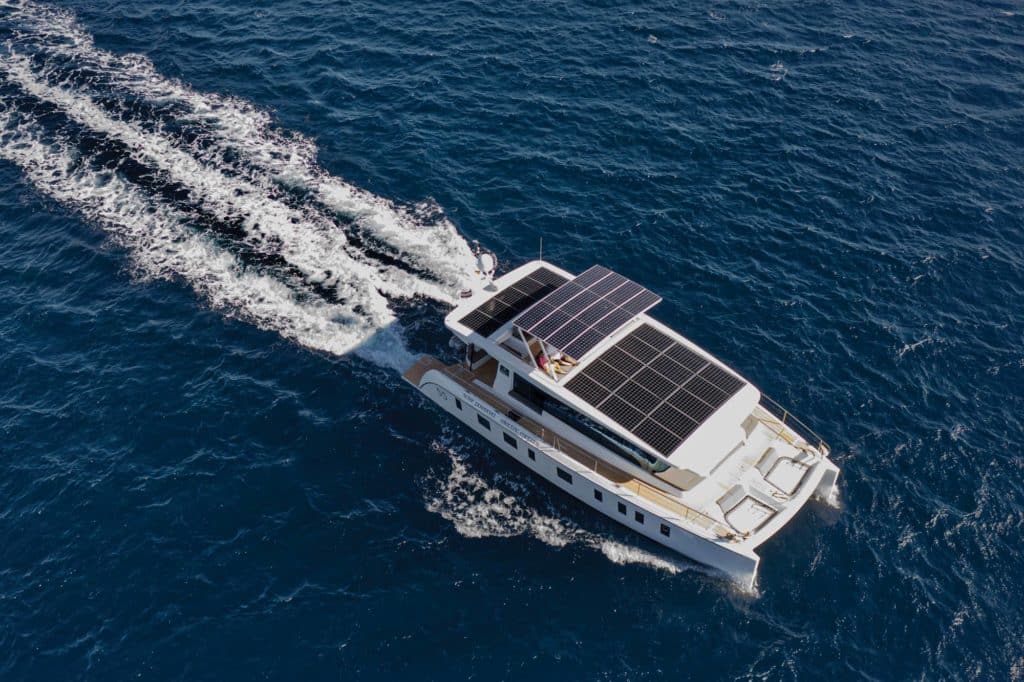
Finally, there can also be the grin factor. “The Eelex 8000 can accelerate from 0 to 20 knots in 4.2 seconds,” Wästberg says. “The software captures 150 data points every second, allowing for real-time analytics of battery and engine performance, including temperature, humidity, pressure, location and the craft’s system status.”
While electric yachts boast some impressive capabilities, free lunches are unicorns. Electric yachts don’t emit carbon dioxide, but their carbon footprint likely deepens with stem-to-stern life-cycle assessments of their photovoltaic panels, carbon-fiber hulls and lithium-based batteries. Then there’s the inconvenient financial truth that all batteries have a finite number of charge cycles and eventually need refitting. Also, for now, diesel mechanics greatly outnumber certified electric-boat technicians, especially in remote locales.
Still, few people gifted with foresight would have bet against Evinrude’s outboards in the early 20th century. The same holds true for today’s electric boats. One only has to look at the Monaco Energy Boat Challenge to realize that some of the brightest minds in the marine and technology fields are committed to a carbon-free future.
Couple this trend with the fact that electric yachts are already providing better performance and compromise-free cruising, and yachting’s future is looking bright (green).
Navier Boats teamed up with Paul Bieker, an America’s Cup-winning naval architect and hydrofoil expert, to create the Navier 27. It delivers 30-plus-knot top speeds or a 75-nautical-mile range at slower speeds. While impressive, hydrofoils require active control, which is a crux that Navier solved by creating an autonomous foil-control system.
Sunreef 100 Eco
It’s one thing to build a solar-powered vessel for the Monaco Energy Boat Challenge; it’s a different challenge to build an electric 100-footer that can accommodate 12 guests and five crewmembers. The Sunreef 100 Eco’s flexible solar panels mean this cat can accommodate 2,610 square feet of solar-farm space and generate up to 46 kilowatts per hour of DC power, which should keep its high-performance lithium-ion batteries topped off.
Hands on the Helm
While the Navier 27 will initially require human hands on its helm, down-the-road software releases are expected to enable autonomous driving.
Panel Planners
While photovoltaic panels can be fitted to any yacht, catamarans present themselves as an ideal platform, given their beam and broader coach-roof space.
- More: Electric , Electric Boats , Electric Motors , Electric Yachts , Silent-Yachts , Sunreef Yachts , Yachts , Zin Boats
- More Yachts
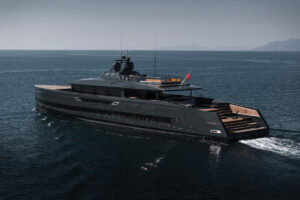
Alia Yachts to Debut SAN Superyacht in Monaco
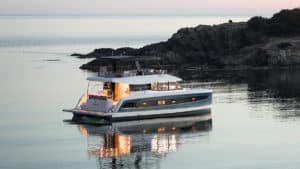
Discover the Top Power Catamarans for 2024
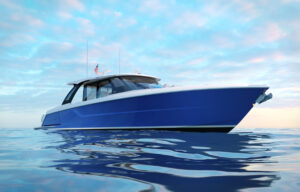
Coming Next Year: Tiara Yachts 56 LS

Top Nine Fishing Tenders For 2024

Sunreef Yachts and North Sails Champion Eco-Friendly Build Materials

Recently-Refit: 100-foot Hatteras Motoryacht For Sale

Simrad Unveils Game-Changing NSX Ultrawide Displays

- Digital Edition
- Customer Service
- Privacy Policy
- Terms of Use
- Email Newsletters
- Cruising World
- Sailing World
- Salt Water Sportsman
- Sport Fishing
- Wakeboarding
Yachting Monthly
- Digital edition

Everything you need to know about yacht solar power
- Dennis O'Neill
- May 23, 2024
Marine solar panels are becoming more efficient and eco-friendly. Dennis O’Neill reports on the latest design advances

Keeping your batteries topped up without having to run the engine is a continuous challenge for cruising sailors, especially those who are highly conscious of their carbon footprint or just wanting to cruise ‘off grid’.
Solar panels have been a good option for sustainable sailing in sunny conditions for some time, being almost maintenance-free and, unlike wind generators, silent. However, maritime conditions are a harsh test for even the best of them due to the incessant exposure they face from saltwater spray and, ironically, ultraviolet (UV) energy.
Now, though, new solar panel technology coming over the horizon promises further improvements in both their efficiency and ease of use.
Silicon cells
Most solar panels use silicon-based photovoltaic cells, with the most efficient type within this class being monocrystalline cells, made from a single pure ingot of silicon. Polycrystalline silicon cells, made from multiple silicon crystals bonded together, perform almost as efficiently as monocrystalline cells but are less expensive to produce.
Ordinary photovoltaic cells, meanwhile, which are the most commonly used, are much cheaper, lighter, and easier to mount where structural flexibility is needed.
The downside, though, is that their intrinsic chemical materials tend to be more environmentally hazardous and difficult to recycle at their end-of-life.

The latest solar panels can even be installed on a fabric canopy. Photo: Tor Jonhson
Perovskite revolution
The new buzz of excitement in the solar panel sector is coming from the development of perovskite solar cells, which promise 50% more efficiency than conventional photovoltaic solar cells in converting sunlight into electricity. They also have the extraordinary potential of being used in a liquid form, such as paint, and even being printed onto compatible surfaces.
Researchers are now reported to be trialling spray-on perovskite solar cells that could be applied as a tint for windows. The production of perovskite solar cells is also less energy-intensive than conventional solar cells and can be achieved at room temperature using relatively abundant and cost-effective base materials.
Article continues below…


How to convert a yacht to electric propulsion
There are hundreds, if not thousands of yachts still sailing with 40-year-old diesel engines emitting smoke and pollutants, so is…

Best marine batteries: 6 12V leisure batteries
Good quality, deep-cycle house batteries are not only a sound investment, but also an important safety factor when cruising. There’s…
Rigid Solar panels
Rigid solar panels currently on the market remain the most efficient and well-suited for mounting on larger boats with flatter surfaces. However, they are heavier, more awkward to mount, and can’t be walked on, so unless you have a hard top or dedicated gantry aft, you’re better off choosing a more resilient semi-flexible option.
Rigid solar panels are covered with impact-resistant glass in a metal frame, and often require hardware to install. Over time, the hardware and frame can corrode in unforgiving marine conditions, so it’s important to choose one with added weather protection.

Solar is well suited to use in yachts. Photo: Catchlight Visual Services / Alamy Stock Photo
Flexible Solar panels
Flexible solar panels, meanwhile, have become increasingly popular with yacht owners due to their versatility and adaptability. While not yet as efficient as rigid panels, they do offer a more eco-friendly and cost-effective option as well as being thin, light, bendable, and easy to install or mounted on almost any surface. You can, for instance, attach flexible solar panels easily to soft biminis and even sails.
However, attaching them to flexing surfaces may cause physical strain on the internal cells, causing damage in the long run. They also tend to have efficiency levels below 20% (compared to just above 20% for rigid solar panels), so they require more physical space to produce similar amounts of output.
They are usually encased in plastic coverings to make them more impact-resistant, but the plastic can degrade due to salt and UV.

Thin solar cells installed on a teak deck. Photo: Graham Snook / Yachting Monthly
Semi-flexible Solar panels
These are ideal for curved boat surfaces. The plastic covering on semi-flexible panels makes them highly resistant to impact and weight, in case you accidentally step on them while moving around a swaying boat.
Kite concept
Sailing enthusiasts working at the German engineering firm FLIN, based in Kiel, have developed a new broad range of versatile marine solar panel systems.
Products within the range include: the FLINrail, a rigid solar panel that can be used while sailing by being hooked onto a boat’s guardrails; the FLINstripe, designed to be mounted along a boom’s lazy bag using Velcro strips; and the FLINkite, a thin lightweight design comprised of up to six square panels that can be hoisted on a halyard and then tilted towards the sun using simple guide lines.

FLINkite can be hoisted vertically on a halyard and tilted towards the sun using simple guide lines
One owner who cruises a 40ft Fountaine Pajot Lavezzi catamaran in European waters has found that his FLIN installations have benefitted his cruising enormously.
‘We have four FLINflex panels mounted permanently on our built-in bimini, which produces around 450 watts while we’re sailing,’ he explains. ‘Then, when we’re at anchor or in port we can also set our FLINkite, which has six panels, each of which can produce up to around 50 watts.
We have a solar controller for each of the two systems and I’m able to monitor how well the systems are generating power using an app on my smartphone. Overall, the FLIN panels cover all of our electricity requirements, including our fridge and electric windlass. We’ve even now treated ourselves to an electric kettle!’

Foldable solar panels inspired by satellites
Origami Inspiration
Another exciting and innovative concept comes from two highly experienced sailors, Kim-Joar Myklebust and Sara Plaga, based in Milan, Italy. Together, they have designed and begun producing an origami-style marine solar panel made of recycled carbon fibre.
‘The idea came out of frustration,’ explains Kim-Joar. ‘We had regular power shortages on our sailing trips, even after we’d installed a large and bulky solar system which couldn’t keep our boat’s batteries charged.
‘As a motorsport design engineer I saw how space satellites used large solar panels that folded outwards to increase the area exposed to the sun, so I started cutting and folding a piece of paper until I found a shape I felt could work as a compact, fold-out solar panel on a boat.’
The couple’s firm, Levante, tested the effectiveness of their origami panels extensively aboard a 36ft cruising yacht, finding that their new product was 20% lighter than other foldable solar panels and 40% more compact, whilst producing only half of the CO2 footprint.
‘We’re determined to revolutionise the entire concept of marine solar panels,’ adds Sara. ‘You can use our origami solar panels in many different ways – just fold them up and use them on your boat, or at home, or anywhere you like.’

It’s vital you connect your solar panel to your battery via an electronic charge controller to prevent the battery overcharging
Solar panel maintenance
Solar panel efficiency is compromised by both salt water and long-term exposure to UV and high temperatures. Industry experts advise that good regular maintenance will improve a solar panel’s performance by around 15%.
You should clean solar panels early in the morning, while they are at their coolest, as cleaning them when they are warm or exposed to direct sunlight can cause internal thermal stresses. Always use distilled or de-ionized water to avoid the formation of mineral stains or deposits on the surface of the panels, and avoid using harsh chemicals or abrasive solvents that could scratch the photovoltaic cells.
Let the panels air dry or use soft cloths, and make sure no water residue is left. You should also check regularly for cracks, breaks or loose connections.
Enjoyed reading this?
A subscription to Yachting Monthly magazine costs around 40% less than the cover price .
Print and digital editions are available through Magazines Direct – where you can also find the latest deals .
YM is packed with information to help you get the most from your time on the water.
- Take your seamanship to the next level with tips, advice and skills from our experts
- Impartial in-depth reviews of the latest yachts and equipment
- Cruising guides to help you reach those dream destinations
Follow us on Facebook , Twitter and Instagram.

Sustainability Success
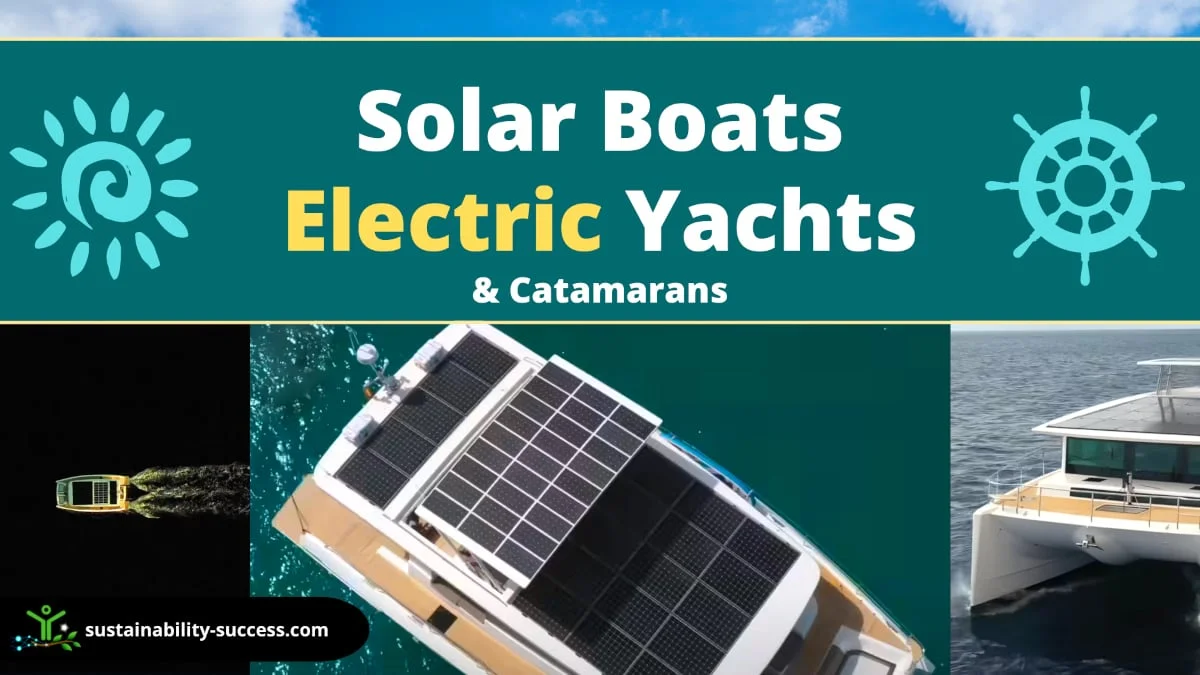
10 SOLAR Boats 2023 & 2024 | Electric Yachts & Catamarans
With more steps being taken towards sustainable development, new, eco-friendly solar boats have been introduced in the world of green travel: solar electric catamarans.
Solar boats are electric yachts that can go for long distances without needing to stop for fuel and without emissions. Those solar catamarans are interesting eco-friendly alternatives to the classic power boat or sailing yacht for cruising. However, there are also a few disadvantages that you should know about before purchasing one!
10 Solar boats, electric yachts & catamarans
Here are the best solar boats that will delight you with a top-notch sustainable yachting experience based on your requirements:
Sunreef Yachts – Eco 80 Sail Catamaran
- Silent Yachts – Silent 80 3-Deck
HH Catamarans – HH44
Silent yachts – silent 60, sunreef 43m eco (140 ft).
- Silent 120 Explorer
- 100 Sunreef Power Eco
Azura Marine – Aquanima 40
Soel yachts – soel senses 48, serenity yachts – serenity 64 (hybrid).
Here’s a quick summary of the features of the best solar catamarans for green yachting in 2023-2024:
| Solar Boats | Solar Powered Electric Propulsion | Sails | Diesel Engine | Size | Price from | |
|---|---|---|---|---|---|---|
| Sunreef Eco 80 Sail | ✅ | ✅ | ❌ | L | $8 mm | ✅ |
| Silent Yachts Silent 80 | ✅ | Kite Sail | ❌ | L | $6 mm | ✅ |
| HH Catamarans HH44 | ✅ | ✅ | ✅ | S | $1 mm | ✅ |
| Silent Yachts Silent 60 | ✅ | Kite Sail | ❌ | M | $2.7 mm | ✅ |
| Sunreef 43M Eco (140 ft) | ✅ | ✅ | ❌ | XL | On request. Expected $23 mm | ✅ |
| Silent Yachts Silent 120 Explorer | ✅ | Kite Sail | ❌ | XL | On request. Expected $19 mm | ✅ |
| 100 Sunreef Power Eco | ✅ | ❌ | Optional Hybrid | XL | On request. Expected $15 mm | ✅ |
| Azura M. Aquanima 40 | ✅ | ❌ | ❌ | XS | $0.6 mm | ✅ |
| Soel Senses 48 | ✅ | ❌ | ❌ | S | On request. Expected $1 mm | ✅ |
| Serenity Yachts Serenity 60 | ✅ | ❌ | ✅ | M | $2.7 mm | ✅ |
If you are an advocate of sustainable yachting or sustainable tourism and are looking to buy an eco-friendly boat that doesn’t rely on fossil fuels , then you would do well to consider getting a solar catamaran. In this article, I will go through the pros and cons of 10 of the best solar yachts and superyachts that you can buy in 2023 and 2024!
It is also important to note that while there are solar panels for sailboats that you can fit on older models, those new boats have been specifically designed to maximize the use of renewable energy.
Most Luxurious + Most innovative solar system
The Eco 80 Sail Catamaran is one of the electric solar boats provided by Sunreef Yachts.
It features a unique “solar skin” that covers all composite structures on the boat, including hull sides, boom, mast, bimini, and superstructure. This green tech makes it possible to place solar panels where it wouldn’t normally be possible (like the hull and any other smaller but useful surface) and provide enough solar energy from every angle.
The boat is 80-feet long (24.38 meters) and includes electric motors that push it smoothly over the water without causing any vibrations or noise.
Besides being solar powered boat, the Eco 80 Sail Catamaran can also be powered by wind and hydropower. It is designed with a sail on its structure, allowing it to tap into wind power and supplement the solar.
The solar powered sailboat generates enough green power not only to propel the boat and keep it moving but also to charge the essential electric water appliances and other water-sport toys.
So far, the Sunreef Yachts Eco solar sailboats have earned a good reputation for being eco-friendly and sustainable. Besides, this solar powered catamaran takes its commitment to the environment a notch higher by using recycled materials , natural fibers, and non-toxic paints to create their boats.
It is no wonder that Sunreef Yachts have been winning environmental awards for so many years. This solar sailboat is one of the most remarkable boats you can ever invest in and it clearly shows the latest advancements in technology .
Prices: about $8 million USD
Where to buy : Sunreef Yachts .
- Larger surface covered with solar panels, that are installed also along the hull, and in other unusual areas.
- The batteries are 30% lighter than normal
- Unlimited cruising range.
- It runs silently and does not cause pollution.
- It has also traditional sails, so it can cruise also when it is not sunny without relying on batteries.
- Luxury, superb quality and finishing
- Great helm position.
- The solar catamaran is very costly (going for $8 million USD or more).
- The solar panels installed on the sides of the catamaran may not be appealing to the eye of all people.
Silent Yachts – Silent 80 Tri-Deck Solar Catamaran
Best pure electric
The Silent 80 Tri-Deck Solar yacht is popular for the large amount of space it offers.
This solar catamaran by Silent Yachts features three large decks that can be easily customized to fit the owner’s preferences and needs. The topmost deck can either be open or enclosed.
This solar powered yacht offers 4 to 6 cabins that are customizable, regardless of whether the deck remains open or enclosed. Besides, the top deck provides additional living space and can be used as a luxury master suite that opens onto a private space outdoors.
Where to buy : Silent Yachts .
- Purely electric propulsion that can be helped by the kite sail.
- The finishing, while being of high standards, doesn’t seem to be at the level of other options in its category.
- Quite costly, with prices starting at about $6 million USD.
- If going for a long cruise during cloudy days you may need to run the generator to keep going.
- The kite sail helps to give some propulsion using wind, but it is less effective than traditional sails.
- The absence of a traditional sail may make the boat a bit less stable, compromising a bit of the comfort while cruising.
Best for world cruising
HH Catamarans is a small boutique boat builder designing some of the most impressive solar boats for cruising, with one of their latest creations being the HH44.
The HH44 is a groundbreaking new boat that is designed to be eco-friendly and efficient.
The boat has a large battery bank that can be charged by solar panels, and also has two electric motors that can be used for electric propulsion up to 7 knots for up to 2h.
The HH44 has an innovative propulsion system named Eco-Drive. This is a parallel hybrid system that combines diesel and electric propulsion for long-range motoring and silent electric propulsion.
The boat also has two diesel engines, which can be used for long-range motoring or to generate electricity. The boat is also designed to be safe, with four propulsion devices plus sails and a large solar array.
The HH44 has a number of technical features that make it a groundbreaking eco-friendly design, including:
- 3 types of propulsion: full electric, standard diesel, and sail.
- 4.2 kWh of solar panels: generating power for recharging the lithium battery bank for solar .
- 10 kW electric motors (5kW each): mounted on the back end of each diesel engine for electric propulsion.
- The diesel engines can be used both for propulsion and as electric generators.
- Possibility to use the propellers to recharge the battery while the boat is sailing. Kind of like using hydropower to charge your solar batteries , pretty cool!
The HH44 is also a performance catamaran thanks to its C-shaped §daggerboards. Daggerboards are an essential component of many sailing vessels, providing both vertical lift and increased upwind sailing performance.
This solar powered yacht features up to 4 double cabins and 2 heads . Not bad for this world-cruising vessel!
If instead, you are looking for a larger boat, HH Catamarans also have other models up to 88ft.
This solar catamaran was also the preferred choice of Gone with the Wynns , a popular cruising YouTube channel. Here’s their announcement video:
Where to buy : HH Catamarans .
- A true performance world cruiser.
- Very resilient with 3 different propulsion modes (electric, sail, and conventional engines) and ideal for offshore cruising.
- It can run silently and without causing pollution.
- More affordable than other solar catamarans, starting from $1 mm USD
- Smaller than other options.
- The improved sailing performance requires narrower hulls, which reduces the available space onboard compared to other traditional vessels of similar size
Best mid-range
The Silent 60 is one of the smaller electric boats made by Silent Yachts. It is designed to be handled by at least two people. The users can either choose to include an additional crew or not.
Despite its outward small appearance, Silent 60 is very spacious and can accommodate a good number of people.
Besides, the electric yacht has a beautiful design that adds to its elegant and luxurious feel. It is usually designed with up to 6 cabins , with each cabin offering every basic amenity you need to have a luxurious stay on the yacht. In fact, the electric solar boat is equipped with everything you need to allow you to live on board permanently!

As someone who loves spending time on the water, I was really excited to learn about the Sunreef 43M Eco: a superyacht that is both eco-friendly and luxurious.
I was especially impressed by the solar power system, which is built into the composite structures of the yacht, and the large hydraulic platform which creates a vast walkaround beach club.
The interior of the solar superyacht is just as impressive as the exterior, with a variety of sustainably-sourced materials and fabrics used throughout as well as energy-saving air-conditioning. The Sunreef 43M Eco can welcome up to 12 guests in the most luxurious conditions.
Silent Yachts – Silent 120 Explorer

Here’s another incredible solar super-yacht by Silent Yachts. The Silent 120 Explorer is a truly unique yacht, designed to explore the world in style and comfort.
Powered by solar energy, this solar catamaran is perfect for those who want to enjoy the beauty of the open seas without worrying about the impact on the environment.
With plenty of space for guests and all the amenities you need onboard, the Silent 120 Explorer is the perfect choice for your next adventure. If you’re looking for a yacht that combines luxury and environmental responsibility, the Silent 120 Explorer is a perfect choice.
The company didn’t yet release detailed information, however, this superyacht seems to be even featuring a helipad under the roof’s solar panels!
The Silent 120 Explorer has plenty of room for guests and all the amenities you need onboard. So if you’re ready to embark on your next great adventure, be sure to consider the Silent 120 Explorer, which will likely start being delivered in 2023.
The 100 Sunreef Power Eco
Sunreef recently launched and sold their first 100 Sunreef Power Eco catamaran, a transatlantic luxury craft that takes solar boat design to the next level.
With massive living space, great autonomy, and impressive features like a flybridge that can be transformed into an outdoor cinema, the 100 Sunreef Power Eco is the perfect vessel for cruising in supreme luxury
This catamaran uses the latest innovations in solar power to achieve outstanding energy efficiency, and its ultralight battery bank provides for silent cruising and infinite range.
The fully customizable interior and exterior make this catamaran a truly one-of-a-kind option, and its use of ethically-sourced and eco-responsible materials is sure to please even the most discerning buyer.
If you’re looking for an electric yacht that is both luxurious and eco-friendly, the 100 Sunreef Power Eco is certainly a great option for you if you can afford it!
The most affordable $
The Aquanima 40 catamaran is entirely powered by solar energy. It features creative adaptations and unique innovations that make it eco-friendlier and more economical boat than other solar-powered catamarans. For example, the solar panels installed on the electric catamaran are built in such a way that they can sell any excess solar energy back to shore stations when connected.
The exterior of the Aquanima 40 has an elegant design. Also, the interior is not only aesthetically pleasing, but also very clean and modern.
The boat is designed with 2 single cabins for the crew and 2 double cabins for guests.
Indeed, this solar boat by Azura Marine is one of the most economical and cost-effective options you can go for when buying a solar catamaran.
- Relatively fast.
- Ideal for short vacations.
- The most affordable solar catamaran, starting at about $0.6 million USD.
- Much smaller than other options.
- Not recommended for long cruises.
- Basic looks and layout.
As its name suggests, the Soel Senses 48 is 48 feet long. It has a slender design and is lightweight , making it more economical than most other solar-powered boats.
The boat is designed with two sleeping berths that can accommodate two people each. It also includes a salon that can offer enough sleeping space for four people.
Compared with most other solar yachts, the Soel Senses 48 has a much smaller size. Its size, adding to its sleek and innovative design, give it faster speed than other solar-powered boats.
It incorporates 12 solar panels installed on the roof ; all these panels generate a combined electrical power of up to 2.7 kWh. The electricity generated by the solar panels is then stored in two batteries which can be easily configured to hold a maximum solar power of 142 kWh.
Like other Soel Yachts, the Soel Senses 48 glides smoothly over water without causing any noise, rattles, or generating fumes.
It has average cruising speeds of 10 knots, even reaching top speeds of up to 18 knots. However, the solar catamaran cannot run at its top speed for long periods.
Both the interior and the exterior of the Soel Senses 48 have a sleek and modern design. Every single component of the solar catamaran has been designed carefully to make it as functional and comfortable as possible. Therefore, when you board on this boat, you can expect to experience one of the best sailing experiences of your life.
The Serenity 64 Yacht features a diesel engine. It is a hybrid solar boat, which means that it can run on either solar power or on diesel.
The diesel engine especially comes in handy when the users wish to achieve faster cruising.
The solar catamaran is a very spacious electric boat and provides plenty of living space. It is built with four luxurious cabins, with each cabin having its ensuite bathroom. And even though the Serenity 64 is smaller than the Serenity 74 model also built by Serenity, it still provided an elegant feel and a smooth sailing experience.
Solar Boats Pros and Cons
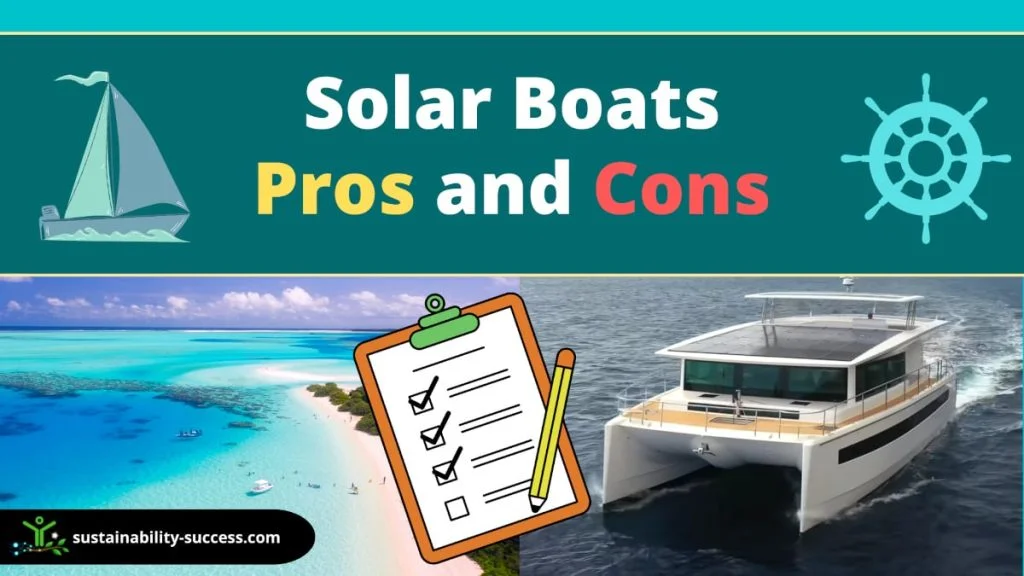
The sun is a powerful and free source of energy, making solar power an attractive option for those looking to power their yacht. Solar panels can be used to generate electricity to run the yacht’s lights, appliances, and even the engine. Solar power can also be used to heat water for showers and laundry. But, what are the pros and cons of solar catamarans?
Here’s a quick summary of the solar yachts’ advantages and disadvantages:
| Advantages of solar boats ✅ | Disadvantages of solar boats ❌ |
|---|---|
| Eco-friendly: solar power is clean and renewable | More expensive than standard boats |
| They (mostly) don’t require fuel | Solar panels work well only during sunny days |
| Reliable | You will still need a (diesel) generator onboard: for both safety and continuity of power |
| Reduced maintenance costs | Reduced stability while cruising (If without sails) |
| Cost-effective in the long run | The smaller versions of solar yachts will have quite limited cruising speed when using only the power from solar |
| Potentially unlimited range, especially for the larger solar catamarans | |
| Possibility to sell back the excess power to shore (when connected) | |
| No restrictions on electrical use |
One of the main benefits of solar power is that it is renewable and environmentally friendly. Solar panels have no emissions and do not produce pollution. In principle, they also do not require fuel, making them very cost-effective in the long run. Solar power is also very reliable, as the sun is a constant source of energy.
There are a few disadvantages to solar power. Solar panels can be expensive to install, and while they require less maintenance, this can be quite costly, especially when it will come time to replace the batteries. Solar panels also need to be pointing directly at the sun to be effective, so they may not generate power on cloudy days or at night.
But there’s more, let’s see what some sailing experts are thinking about solar catamarans!
Sailing expert’s solar Boat review
Recently, one of the most popular sailing YouTube channels, Saliling La Vagabonde , published a very honest and interesting review of the solar powered yacht Silent 55. Here’s a summary of their experience:
- 7 Days onboard (6 nights)
- Travelled 145nm with an average speed of 7 knots
- Generator used for about 12h (in total)
- Fuel consumed: 208 liters
Here are some interesting observations they made:
- While cruising it may feel less stable than a standard sailing boat because it doesn’t have a sail to stabilize it when hitting the waves.
- For the Silent 55 it was possible to move at about 3 knots by using only the power generated by the solar panels (without using the batteries) on a sunny day. This means that if you are moving the solar yacht around quite frequently, you will end up using the generator quite a lot to produce the necessary power.
- When the batteries are out of power, the Silent yacht is using a (diesel) generator to supply the necessary power to keep the boat moving and to power the appliances.
- A great luxury yacht with all the comforts and going in the right direction for the future of the sector.
- Overall, the Silent Yacht is a great eco-friendly alternative to a power boat , while if you are thinking about cruising around the world, you would be probably better off going for a standard sailboat (or for some of the hybrid alternatives mentioned in this article, like the HH44).
Why are solar yachts all catamarans?
Solar yachts are all catamarans for 2 main reasons:
- Catamarans have a larger surface, which allows for placing more solar panels and also offers more room for the batteries onboard.
- Catamarans have efficient hulls for their size. This reduces their power consumption while moving.
This makes catamarans the ideal platform to build a solar-powered boat.
Modern solar electric boats are undoubtedly an eco-friendly choice in sea travel and a form of green tourism . Not only do these electric boats provide a smooth sailing experience, but they also reduce the release of emissions into the atmosphere, reducing the environmental impact and enhancing sustainability .
Luckily, given their size, solar catamarans can charge themselves (unlike electric cars ), so they can sail indefinitely without the need to stop for refueling.
If you are environmentally conscious and looking to get a boat that is more viable, desirable, and eco-friendly, you may consider investing in one of the solar yachts discussed in this article!
- Yachting World
- Digital Edition

Wind, water and solar power: how alternative energy has been transformed
- July 15, 2015
State-of-the-art solar power, wind and water generators have transformed the efficiency of alternative power sources. Can we say goodbye to diesel? Rupert Holmes investigates

Imagine a future in which there is never any need to fill up with diesel, buy gas, or top up water tanks and the only constraints are those of needing to stock up with food and maintenance of the boat itself.
It’s a scenario that’s much closer than many realise. The past decade has seen an accelerating pace of change, with technologies that appealed only to a minority, or were prohibitively expensive, now firmly entering the mainstream.
It’s already more than five years since the first of Gideon Goudsmit’s 44ft African Cat cruising catamarans sailed from South Africa to the Netherlands without using fossil fuel, even for cooking, watermaking and hot water.
Although many would baulk at the boat’s 80-mile range under power, this is not a quirky vessel in any other respect – it’s a spacious, fully fitted-out, comfortable cruising catamaran with a high level of equipment. In addition to solar and wind generators providing electrical power for the lightweight design, the boat’s electric propulsion motors were configured to be used as generators when under sail.
And it was by no means the first to do this. When Francis Joyon set the fastest time for a solo circumnavigation in 2007/8, his 80ft trimaran IDEC ll did not have a diesel generator. Similarly, Raphael Dinelli completed the 2008/9 Vendée Globe race without using any fossil fuel.
While few owners aspire to this level of self-sufficiency, incorporating some of these ideas can improve reliability and convenience for more conventional yachts, and may also reduce costs. Perhaps the most persuasive reason of all to fit additional means of generating power is that the presence of multiple charging systems improves a boat’s reliability by introducing a degree of redundancy – if one system fails much of the charging capacity remains intact.
Combining several different technologies can also balance the pros and cons of different power sources.
Thin film solar

A new development that could be the answer to the African Cat’s short range under its electric motors is extremely flexible giant solar panels that can be attached to sails, or even incorporated into the laminate. The durability of this technology was demonstrated at the end of last year by Daniel Ecalard, who used a pair of 3m 2 panels near the head of his mainsail to provide the electrical needs of his Open 50, Defi Martinique , during last year’s Route du Rhum race.
During the race the system stood up to a gale in the Bay of Biscay, in which ten per cent of the fleet retired, and survived the 25-day Atlantic crossing, during which Ecalard logged 4,677 miles, intact.
The system, named PowerSails, was developed by Alain Janet, owner of UK Sailmakers France. Each square metre of the panel is capable of generating 100 watts and, according to Janet, does not need direct sunlight to generate electricity: “In fact, the panels on the sail opposite the sun will generate 30-40 per cent of their maximum output with the indirect and reflected light,” he says.
These panels are made from film that’s 65 microns thick and weighs 100 grammes per square metre. This technology can also be used in other applications – a cockpit bimini shade, for instance, that could generate 1kW on a 50ft yacht.
Prices start at around £700 per square metre of panel, though this is expected to fall as production increases.
Mainstream markets
Janet has produced sails for a Dehler 39 in which a sizeable solar panel is laminated to the mainsail. The technology has also been harnessed by production boatbuilder Arcona, which has announced a version of its 38-footer equipped with an electric engine/regenerating system, sails with solar panels and a big bank of lithium ion batteries.
The boat debuted to great acclaim at this year’s Helsinki boat show, where it won the boat of the show award.
The solar panels in the mainsail are of sufficient size to generate an average of 1,000 watts of power, and the boat has a further 1,000 watts of solar panels. This is sufficient to drive it at four knots under power during daylight hours without taking any charge from the batteries.
Solar power

Almost every aspect of this sector has seen enormous development over the past decade, with worldwide installed capacity having grown by 3,000 per cent since 2005. The resulting economies of scale mean prices have tumbled, while funds are continuing to pour into research and development.
Panels are becoming progressively more efficient, with the best commercially available units now having an efficiency of around 25 per cent, although double that has been achieved in laboratory conditions.
At the moment the thin film panels mentioned above are around 12-14 per cent efficient, but in the future we can expect all types of solar panel to become smaller in area for a given output.
In addition, today’s panels are less susceptible to output drops when in partial shade and give good performance in cloudy conditions. This makes mounting panels on the coachroof, rather than a cumbersome gantry, an increasingly viable option.
Currently solar sells for a very wide range of prices, with most marine grade panels priced from around £200 to well over £500 per 100 watts.

Solar Pros:
√ Improving technology with reducing prices
√ Suitable for a wide variety of boats and conditions
√ Proven ‘fit and forget’ reliability
x Many boats have insufficient space for a enough conventional solar panels
Hydro generators

The transom-mounted generators, such as those produced by Watt & Sea, originally came to prominence in the IMOCA 60 fleet, with the 2008 Vendée Globe race used as a gruelling testbed for the prototypes. They are capable of producing large amounts of power with minimal drag and can be lifted clear of the water when not in use.
The company’s cruising units are rated at either 300 or 600 watts, depending on the model chosen. The larger of these produces 120 watts of power amps at just five knots of boat speed, rising to more than 250 watts at 7.5 knots.
Over a 24-hour period that represents a significant amount of power that could alone run the majority of systems aboard many 50-60ft yachts, including watermakers, pilots, lights, electronics, refrigeration and water heating.
On the downside, hydro generators are relatively expensive compared with solar and wind generators, with Watt & Sea’s prices starting at a little over £3,000. Moreover, they are potentially vulnerable to damage when docking. The latter can be a particular problem in the Mediterranean, where most mooring is stern to the dock.
The Sail-Gen from Eclectic Energy (from £2,000) or the towed Aquair (a little over £1,000) from Ampair are more economic, though less convenient, alternatives.
Another option is a hybrid drive system with a regenerating function via the boat’s main propeller. Advantages include an absence of peripheral parts attached to the transom that may be susceptible to damage, or detract from a yacht’s aesthetics.

√ High power output
√ Impressively low drag
x Transom-mounted types are expensive
x Vulnerable to damage
x Only works when the boat is underway
x Impeller of transom-mounted models may leave the water if boat is pitching in a head sea
x Towed type difficult to deploy and recover
Methanol fuel cells

These small, lightweight units have many attractions for use on board. Most are designed to monitor battery state constantly and automatically start charging once the voltage falls to 12.2V. They are almost silent in operation, with carbon dioxide and water the only exhaust products.
Output ranges from around 3 to 9 amps and more than one unit can be used to achieve higher charge rates. Given that a fuel cell can, in theory, run for 24 hours a day – unlike a marine diesel generator, which is more usually used for only two or three hours – a fuel cell can pump out a useful amount of power, despite the low amp hour rating.
On the other hand the long-term cost of ownership is a drawback. With retail prices of around £2,300-5,000 they are relatively expensive to buy, although installation costs are minimal. Additionally, the platinum catalyst has a finite life of around 5-8,000 hours. As this is by far the most expensive element, it’s clear that fuel cells aren’t yet up to providing power 365 days a year for long-term use.
A further problem is with the fuel, which to achieve the purity required is expensive and generally only available from specific outlets.
At the moment it looks as though fuel cells have more cons than pros for many yachts, although there are some circumstances in which they may make sense. For instance, they are popular on long-distance short-handed raceboats. A fuel cell may also be useful on a boat with a hydro generator that is self-sufficient on power while on passage, but may need an occasional boost when at anchor for long periods to supplement solar and wind charging.

√ Unobtrusive, clean and quiet
√ Easy installation
x Long-term ownership and operating costs
x Fuel not universally available
Wind generators

For several decades these were de rigueur for serious cruising yachts. On paper a decent-sized unit is capable of generating the entire needs of a 45-50ft yacht. However, they also have a number of drawbacks, the most commonly cited being noise and vibration in strong winds.
In addition, most cruising routes maximise time spent sailing downwind, which reduces apparent wind strength, which in turn dramatically reduces the output of a wind generator. Similarly, generating power in many anchorages can also be problematic, as the very shelter sought by the skipper also means that wind speed is generally significantly reduced.
Nevertheless, wind generators can be useful in some circumstances; the important thing is simply to recognise their strengths and weaknesses.
Prices range from small units producing just four amps or so for less than £400 to upwards of £2,000, although for most medium to large yachts £1,400-1,900 will buy a suitable system.

√ Capable of producing plenty of power in a strong breeze
x Noisy and creates vibration
x Output severely reduced in sheltered anchorages and when sailing downwind
x Can be bulky and cumbersome
Typical daily power outputs

Typical power inputs for 12V systems (divide the ah figures by 2 for 24V systems)
Assuming the panels are mounted in an unshaded position, each 100W of rated capacity can be expected to produce, on average, around 33ah of charge per day during the UK summer.
For a yacht averaging 150 miles per day (6.25 knots), Watt & Sea’s 300W cruising model will produce around 175ah per day. This rises to around 275ah per day at an average speed of seven knots, but falls to 120ah per day at five knots average.
These have by far the biggest range of potential outputs, with many units averaging less than ten per cent of their rated output over a full year. That would equate to a mean of around 50ah per day for a model with blades of around 1.2m diameter.
However, there are few average days and a 24-hour period with steady 15-knot breeze would see the same unit produce more than 100ah per day. In a 25-knot wind it would be 500ah.
The daily output of fuel cells is very predictable. For example, a model rated at 5 amps would produce 120ah per day, if run constantly for 24 hours.
It’s worth noting that, as the catalyst nears the end of its life this figure will tend to reduce.

Battery monitors
The more complex a yacht’s systems, with multiple power inputs and outputs, the harder it is to keep track of the battery state. However, a properly calibrated battery state monitor will measure all the power flows in and out of each battery bank. This makes it easy to keep track of power consumed and keep charge levels above the 50 per cent of battery capacity needed to ensure good battery life.
Reducing power requirements
Despite the increasing complexities of many of today’s yachts, new technologies mean that power requirements are steadily reducing in many cases. Whereas only a few years ago the accommodation of a quality 60ft cruiser might have been lit by 400W of halogen bulbs, low-power LEDs can reduce that by 90 per cent.
Despite their growing size, TVs can now draw less power than a couple of 12V lights did a decade ago. Similarly, tablets and smartphones are increasingly used for activities that not so long ago could only be done with a power-hungry laptop.
Pragmatic solutions for cruisers

For most yachts it’s worth combining a number of different types of technology, depending on how you sail and where. Here are some options for a range of different scenarios:
1. Cruising in Northern Europe
Despite a reputation for inclement weather, solar power can be a very viable option here, thanks to long daylight hours and relatively cool temperatures. The latter may sound counter-intuitive, but the efficiency of solar panels reduces at higher temperatures.
Whether wind power is worthwhile may depend on where you’re planning to sail and the time of year. In mid-summer in the southern half of the UK, for instance, the wind is typically less than ten knots for 50 per cent of the time, so wind generators are of limited use. However, in western Scotland towards the end of the season you could generate plenty of power, which would compensate for the reduced solar output.
With the longest passages most yachts will make being 300-400 miles, a hydro generator is likely to be of less use than for boats making longer voyages. An exception might be for those planning to spend a lot of time at anchor and who therefore value the ability to arrive at an anchorage with batteries fully charged.
2. Mediterranean cruising
While many marina-based yachts, with ready access to shorepower, in the western Med appear to have been slow to adopt solar power, the opposite is true in the eastern Mediterranean where there are increasingly few privately owned yachts without an array of panels.
As an example, Alan and Deborah Mackenzie’s Lagoon 410 catamaran, based in the north-west Aegean, has three 100W semi-flexible panels. This has proved fractionally too small for their needs – to power a fridge, freezer, powerful fans and a 19in TV/DVD in addition to the boat’s systems. They plan to solve this with an additional panel.
Owners of monohulls tend to be more restricted by the space available to mount panels, although the new thin-film panels clearly offer a wider range of options. Given the relatively short distances most yachts travel on each passage, the same considerations regarding a hydro generator in northern Europe apply here.
Equally, in most parts of the Med, wind power is not viable for much of the time.
3. Caribbean
Here it would be easy to assume that solar is the best option. However, while it can certainly be useful, as the main sailing season is winter, when daylight hours are restricted, daily output is smaller than many owners expect. Given that the islands are in the tradewind belt, wind generators stand to produce a good output here.
4. Tradewind passagemaking
Here it’s clear that hydro generators (or power generation via a hybrid drive) have advantages and can deliver a good charge. Wind power, however, makes less sense for tradewind sailing, owing to the reduction in apparent wind speed when sailing downwind.
The output of solar will also suffer from the restricted number of daylight hours on a typical east to west Atlantic crossing. There are, however, more factors in favour of solar on a west to east crossing, as it is likely to be at a higher latitude – with more daylight.
5. World cruising
If you’re going further afield combining as many options as possible will yield the best rates of charging over a wide range of conditions. This is exactly the route taken by Jimmy Cornell, founder of the ARC, whose new Garcia 45 is fitted with solar, a Sail-Gen water turbine from Eclectic Energy and a wind turbine.
The water generator will create 50W of power at four knots of boat speed, rising rapidly to more than 250W at 7.5 knots. The wind turbine, from the same company, is also a high-power model, with a 1.1 metre rotor diameter, producing approximately 100W in 15 knots of wind, rising to 235W in 22 knots.
For more information:
www.africancats.com
www.sunware.de
www.solarclothsystem.com
www.wattandsea.com
www.efoy.co.uk
Eclectic Energy: www.duogen.co.uk
www.oceanvolt.com
www.ampair.com
www.hybrid-marine.co.uk
www.victronenergy.com
This is an extract from the June 2015 issue of Yachting World

- Green Propulsion
- Renewable Energy
- Energy efficiency
- Sustainable materials
- Eco Insights
- News & Events
- Sunreef News Magazine
- Press About Sunreef

- 60 Sunreef Power
- 70 Sunreef Power
- 80 Sunreef Power
- 100 SUNREEF POWER
- Sunreef Ultima Range
- Sunreef 44 Ultima
- Sunreef 55 Ultima
- Sunreef 66 Ultima
- Sunreef 77 Ultima
- Sunreef 88 Ultima
- Sunreef fleet

- SUNREEF ZERO CAT
- SUNREEF 100
- Sunreef Fleet

- SUNREEF 35M
- SUNREEF 43M
- 49M SUNREEF POWER
- 210 Sunreef Power Trimaran
- Sunreef Explorer
- 40M SUNREEF EXPLORER
- 40M SUNREEF EXPLORER ECO
- 50M SUNREEF EXPLORER
- Superyacht Fleet
RENEWABLE ENERGY ON YACHTS
Solar panels.
Solar catamarans harvest power from the renewable elements for a more eco-conscious and efficient cruising experience. In-house designed and manufactured by the shipyard, Sunreef Yachts’ solar panels are state-of-the-art. They can be easily mounted anywhere on the sustainable yacht’s surfaces, including the hulls and masts, maximizing solar power. The panels are fully customizable in terms of size and shape to easily adapt to any structure on board. Dismounting for maintenance and repair is effortless. Flexible and ultra-solid, they are the industry’s lightest panels. Sunreef Yachts is also the first company to integrate solar panels in the curved carbon bimini roofs of its eco yachts. The Sunreef shipyard ’s R&D department is also developing an advanced system to recover heat from the panels to heat up the eco-friendly yacht’s boiler.
Hydro Generation
Hydro generation is about creating power whilst sailing in a sustainable catamaran. Sunreef Yachts Eco yachts can be equipped with advanced electric propulsion allowing power to be generated from the propeller rotation while the yacht is navigating under sail. This energy can be used to power the propulsion battery bank as well as the electronics on board. Hydro generation is highly efficient on eco yachts as they can recover electric power from two engines. It is a reliable and endless source of power for eco-friendly yachts .
Wind Turbines
Wind turbines produce power from the wind to keep the yachts battery bank charged. They play a very important role in the energy mix of every eco yacht. They are a stable source of power throughout the day, but also at night and in cloudy weather, when the yacht cannot rely on solar power. Energy is produced not only under navigation but also while docked. Using a sustainable power source, wind generators can operate in various wind conditions, starting from very light winds to stormy weather. The turbines are usually placed atop of the eco-friendly yacht to maximize the conversion of wind power to electricity.
Green Concept
Green propulsion for eco catamarans, energy efficiency on yachts, sustainable finishing materials, see our range.

- Privacy Policy
Sunreef Venture S.A.
Sunreef Yachts Shipyard
ul. Tarcice 6
80-718 Gdańsk, Poland
+48 58 769 77 77
- Search Please fill out this field.
- Newsletters
- More to Explore
- Things To Do
The Top 12 Things to Do in Nizhny Novgorod, Russia
Take a first-rate trip to Russia's fifth city
Ershov_Maks/Getty Images
Although it's Russia's fifth-largest city, you could be forgiven for never having heard of Nizhny Novgorod. Notwithstanding that another Russian city is simply called " Novgorod ," the current name of the city just doesn't have a memorable ring to it. (By contrast, its name during the Soviet years — Gorky, like the famous author — was much more iconic.) At any rate, this city of just over a million around six hours east of Moscow is more than worth a visit. These are just 12 reasons why!
Tour the Kremlin's 13 Towers
Like most every other city in Russia, Nizhny Novgorod is home to a Kremlin. (The word "kremlin" means "citadel" in Russian, and has nothing to do with the modern Russian government) One thing that elevated the Kremlin of Nizhny Novgorod above others in Russia (with the possible exception of the Moscow Kremlin and one or two others), however, is the fact that its wall has 13 towers. During the summer months, at least one free walking tour per day operates from the main entrance of Nizhny Novgorod's Kremlin.
Climb Russia's Longest Staircase
Named for one of the most famous Russian pilots of the early aviation age (Valery Chkalov), the Chkalov Stairs connect two of Nizhny Novgorod's public squares, which sit on the upper and lower embankments of the Volga River, respectively. Built in 1943 (during the period when Nizhny Novgorod was known as Gorky), the Chkalov Stairs currently have the distinction of being the longest staircase in Russia.
Go Wild at Limpopo Zoo
One thing that surprises many travelers to Nizhny Novgorod is how amazing its zoo, colloquially known as Limpopo is. In addition to being home to a tropical botanical garden (which, not surprisingly, is indoors), the zoo hosts a variety of reptiles, mammals and birds. There's also a small sculpture park on the grounds of Nizhny Novgorod's zoo, including both original and replica pieces.
Shop (or Just Stroll) Along a Storied High Street
Bolshaya Pokrovskaya Street has been the de-facto "Main Street" of Nizhny Novgorod for more than 200 years. Well, minus the Soviet Union period, during which the cafes that once (and now) lined it became somewhat worthless, since intellectual conversations were basically forbidden. These days, you can come here for a cup of Russian tea then shop at the dozens of boutiques you'll find on either side of the street.
Sun Yourself at the Spit
Nizhny Novgorod sits at the confluence of the Oka and Volga Rivers, with the triangle of land at the point they meet being known as the Nizhny Novgorod Spit. Ignoring the unfortunate double-meaning of its name for a moment, this is actually a wonderful place to get a tan, if it's summer in the city and the sun happens to be shining. Even if not, photographers will enjoy a trip here for a view of the Kremlin and city center across the Volga.
Marvel at the Open-Air Museum of Rozhdestvenskaya Street
Like Bolshaya Pokrovskaya Street, Rozhdestvenskaya Street has long been one of the most important streets in Nizhny Novgorod. However, while the former has become a primarily commercial artery in recent decades, the charm of the latter is in its well-maintained buildings, which hearken back to the mid-18th century. In fact, some locals go so far as to consider Rozhdestvenskaya Street an "open-air museum."
Ride Russia's Newest Cable Car
Russian investment in infrastructure isn't quite as dramatic as that of, say, China, but the Federation has nonetheless built a selection of interesting and modern transportation systems since the fall of the USSR. Among them is the just-opened cable car, which travels from the center of Nizhny Novgorod over the Volga River to suburban Bor. At any rate, a ride over the river and back is definitely worth inclusion on your list of things to do in Nizhny Novgorod.
Taste Traditional Shchi Soup
Shchi is one of Nizhy Novgorod's most delicious local specialties, available in most every local restaurant that serves Russian food. From above, a bowl of shchi seems incredibly complicated, with a colorful palette that suggests the inclusion of dozens of diverse ingredients. In fact, the magic of shchi is in its simplicity. Building on the traditional pan-Russian recipe of cabbage, pork fat and salt (yes, just three ingredients), locals in Nizhny Novgorod sometimes add minced meat or egg whites as bonus items, then top the tangy soup with a dollop of sour cream.
Survey Amazing Russian Orthodox Architecture
Think the only amazing Russian Orthodox churches are in Moscow and St. Petersburg? Think again. Nizhny Novgorod boasts several amazing examples of Russian Orthodox architecture. From the brilliant golde domes John the Baptist Cathedral near the Volga River, to the expansive grounds of 14th-century Pechersky Ascension Monastery, Nizhny Novgorod is an architecture buff's dream!
Take a Look Back in Time
Nizhny Novgorod's historical center is relatively large and well-preserved, but a stroll (or 10) through it isn't the only way to get a feel for the city's centuries-long past. Head to the Russian Museum of Photography, which not only showcases a variety of images of Nizhny Novgorod that date back a century or even longer, but also spotlights the equipment Russian photographers have used throughout the years, and notable figures in Russia's photography history as well.
Visit the Convent from the Movie "Salt"
You'd be forgiven if you've entirely forgotten the 2010 film "Salt." However, if you remember any destination from this spy thriller, it's likely the facade of Makaryev Convent, which is located within day-trip distance of Nizhny Novgorod. Having served as a monastery from its consecration in the early 15th century up until the beginning of the Russian Revolution, Makaryev became a convent after the fall of the Soviet Union , and is now home to 22 nuns.
Take an Excursion to a 12th-Century Tea Town
Another worthwhile day trip from Nizhny Novgorod is to the town of Gorodets, which sits about an hour to its northwest. With a history dating back to the 12th century, Gorodets boasts an interesting array of architecture and museums, including one dedicated to samovars.
Related Articles
More related articles.
- Trip Planner
- Private Tours
- Small Group Tours
- Two Capitals
- City Breaks
- Trans-Siberian
- River Cruises
- Russia & Beyond
4-star edition of the private 9-day tour of the Russian capitals
5-star edition fo the private 9-day tour of Moscow & St. Petersburg
13-day in-depth discovery of Moscow, Kazan, and St. Petersburg
7-day tour designed to harness the best of the Venice of the North
11-day private discovery of Moscow, St. Petersburg, and the Golden Ring
Your Russia Getaway
Fill out the short trip survey to receive a personalized itinerary from a destination expert.
- Travel guide
- Before you go
- What to see
Russia Trip Planner
Learn about the dos and the don'ts for your amazing trip to Russia
- Our Partners
- Reservation Policies
Rated 9/10 on the Trustpilot review platform
- My itineraries
- Chat with us
- Trip survey
Groups & Agents
- For Suppliers
+1 (888) 744-6056
- North America : +1 (888) 744-6056
- Oceania and Australia : +61261888118
Nizhny Novgorod, Russia
You are here, about nizhny novgorod.
If you are still wondering, whether Nizhny Novgorod travel would be something you'd like to experience, let us help you - it would. This colorful Russian city full of cultural heritage might exceed your expectations since it has something to offer for everyone.
Reasons to Travel to Nizhny Novgorod
Art enthusiasts will surely enjoy the State Gorky Literature Museum which was named after the great Russian author Maxim Gorky. Bet you didn't know that Nizhny Novgorod was his birthplace? Do not worry, now you do.
There are also multiple art galleries and installations such as The Blogger's Bench which provides free Wi-Fi access if you are in the mood of blogging about your experience.
The musician community will not be disappointed as well, as the city has multiple live music bars and cafes open for the public and is often the place where great concerts are staged. If you are not that into art, there are plenty of other places worth putting on your Nizhny Novgorod itinerary, f.e., the grand red-brick Kremlin.
The Cathedral of Archangel Michael, which is actually the only church that has stood the test of time in Kremlin, along with multiple ancient towers is what makes this site a must-see. By the way, the magnificent church of St. Elijah is right around the corner, so make sure to make a little detour during your Nizhny Novgorod tour after seeing the Kremlin.
Another thing you should not miss during your Nizhny Novgorod sightseeing is the panorama of Strelka, overlooking the amazing view of the confluence of the rivers Oka and Volga and also the Fedorovsky Embankment, a perfect place for a stroll in the evening.
If you want to take a look at the scene from a different angle, hop on a boat trip along the two rivers! Nowadays Nizhny Novgorod is the fifth-largest city in the Russian Federation, somehow managing to maintain the unique heritage alongside its cultural versatility, thus looking at pictures is not enough, feel like exploring it yourself?
Best Things to Do in Nizhny Novgorod
- Witness the ancient Novgorod Kremlin
- Get inspired by the scenic panoramas of the Volga River
- Explore diverse museums of Nizhny Novgorod
More About Nizhny Novgorod
- Call us now
- Request a call
- Chat on WhatsApp
- Start Live chat
- Contact via email

Moscow & St. Petersburg Small Group Tours Private Tour Packages Trans-Siberian Trips Russian River Cruises Moscow Tour Packages St. Petersburg Tours All Russia Tours
Why Travel to Russia Best Time to Visit Russia Russian Visa Information Tips Before Traveling Tips on Arrival Russian Currency Moscow Travel Guide Read More in Our Blog
Hermitage Museum Church of the Savior on Blood The Kremlin Sergiev Posad, Golden Ring Kizhi Island The Red Square Siberia Lake Baikal
Fla. Seller of Travel Ref. No. ST39939 All Rights Reserved © 2024 About Us | Testimonials | Our Blog | Terms of Service | Privacy Policy
- Solar Electric Boats
- Electric boats
Navalt is bringing sustainability to the waters of India with solar electric boats that go over 200 km
A sustainable marine mobility developer called Navalt is making a quick impact on a huge part of Asia. It is rolling out some of India’s largest and most efficient solar electric boats on the water. From ferries to water taxis and even yachts, Navalt is doing a little bit of everything.
- Electric Yachts
- Sunreef Yachts
Sustainability at sea: Sunreef is integrating recycled plastic bottles into solar electric yachts
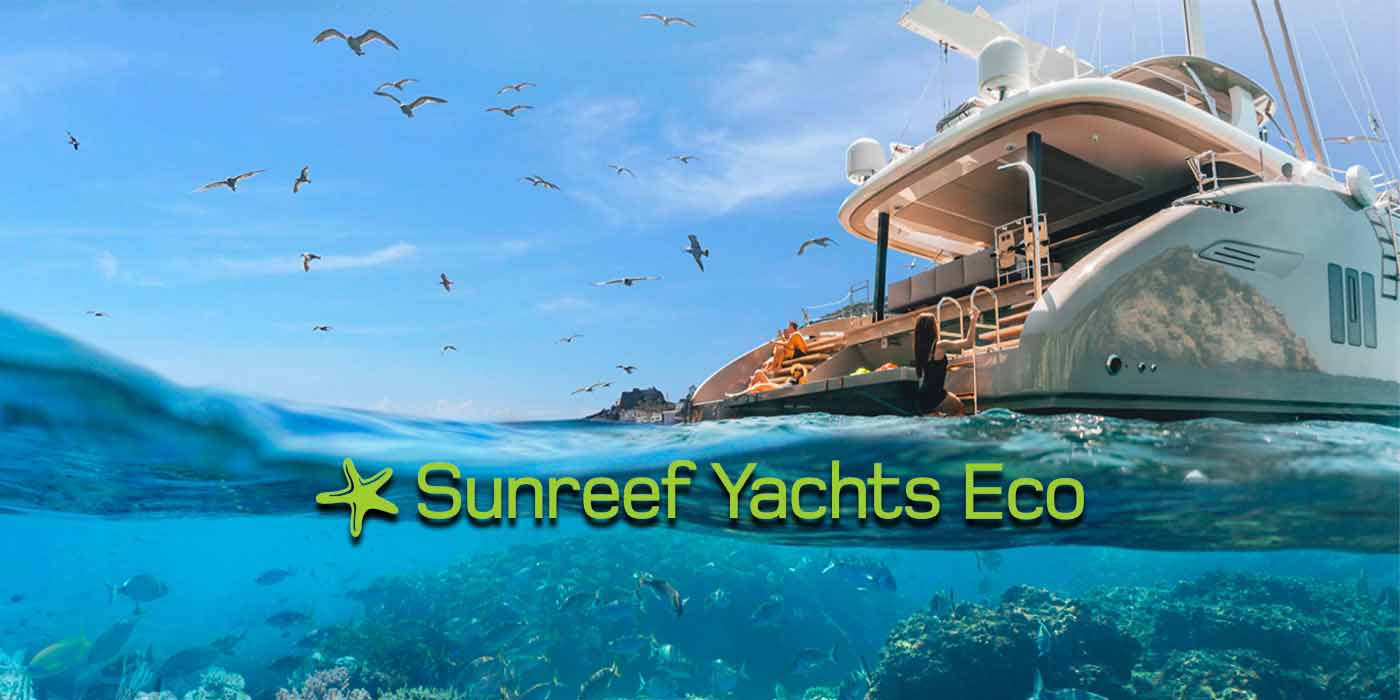
Sunreef Yachts is already a solar electric boatbuilder recognized for its sustainability efforts in the maritime industry but is now taking things a step greener. The company is now integrating recycled PET bottles into its solar electric yacht production process.
Sunreef Yachts unveils new luxe solar electric Explorer catamaran with over 1,000 kWh in batteries

Sustainable boatbuilder Sunreef Yachts is adding a sleeker, lighter solar electric catamaran to its portfolio. The new Explorer Eco 40m is the company’s smallest electric yacht to date, but debuts with some of the most advanced technology, including Sunreef’s proprietary “solar skin”
Sunreef shows off gorgeous 80-foot solar electric luxury yacht ahead of US debut this month
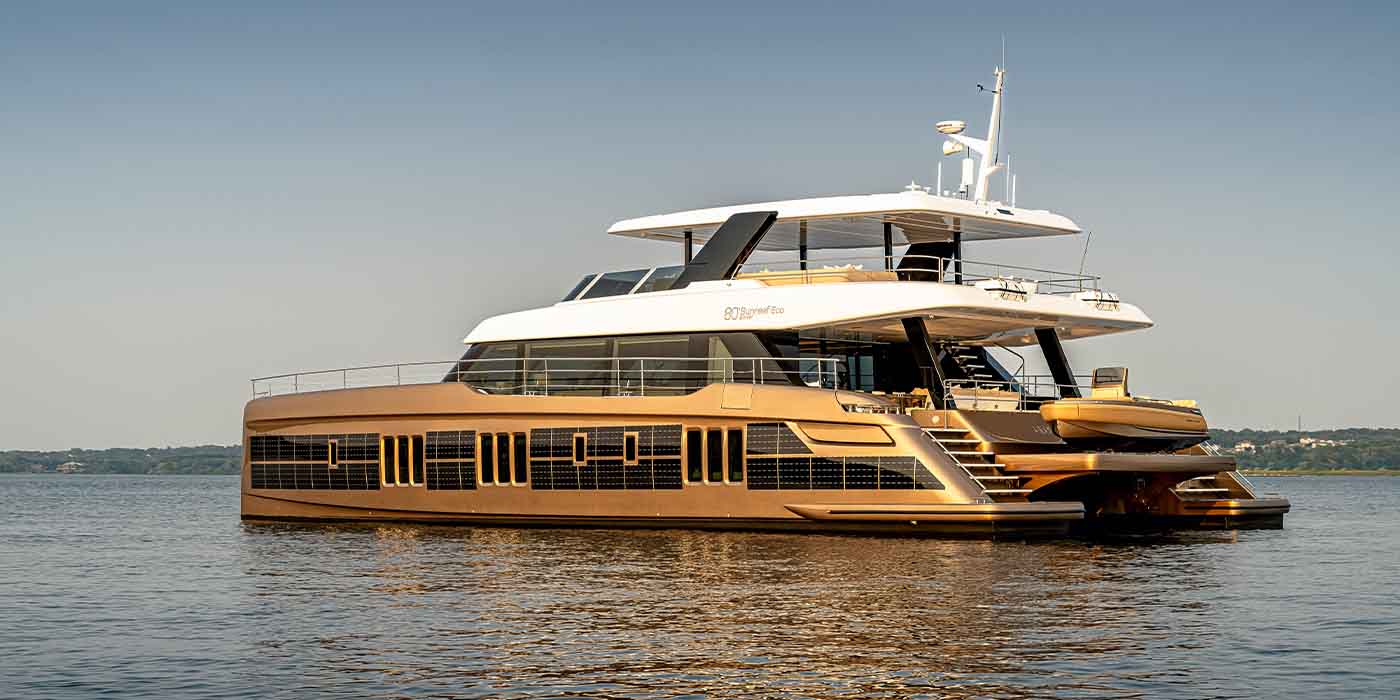
Eco-responsible shipbuilder Sunreef Yachts had given the public its first glimpse of its new 80-foot solar electric yacht before it makes it US debut in Fort Lauderdale, Florida later this month. The 80 Sunreef Power Eco is a fully-electric luxury catamaran that could very well be one of the most advanced solar electric yachts built to date.
Floating solar-powered dock unveiled for 100% off-grid charging of electric boats
The Portuguese company Faro Electric Boats has just pulled the cover off of the new Faro PowerDock. The off-grid electric dock and boat lift is powered by a solar array, offering recharging opportunities even when shore power isn’t an option.
- Hydrogen Fuel Cell
- Alva Yachts
ALVA Yachts goes long with a 90-foot solar electric superyacht boosted by hydrogen and wing sails
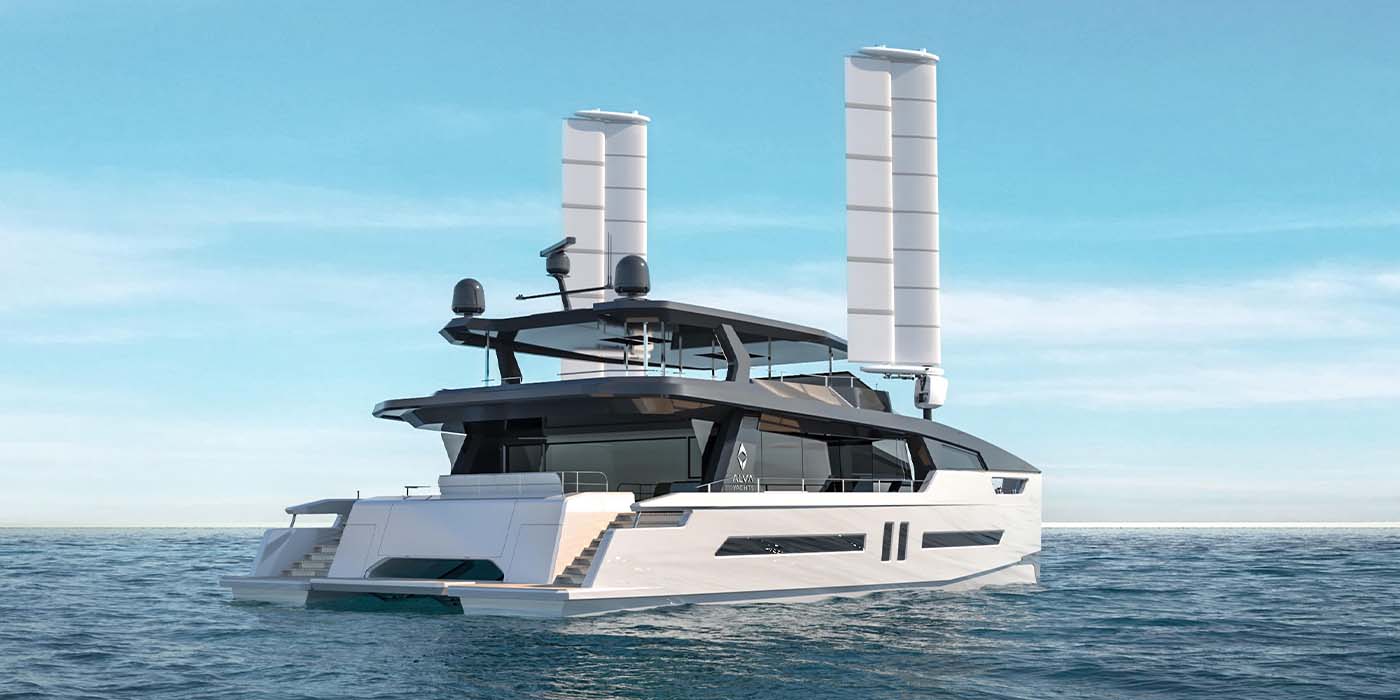
Luxury electric boatbuilder ALVA Yachts is doing what many in the maritime industry consistently strive toward – building vessels bigger and better. Its latest solar electric catamaran is a 90-foot superyacht called the OCEAN ECO 90 H2 – in addition to zero-emissions propulsion and sustainable power, it adds hydrogen fuel cells and a wing sail propulsion system to alleviate any need for fuel aboard. Oh, don’t forget the jacuzzi up top.
- Hydrogen Boats
This 64-foot hydrogen electric yacht uses solar and sea water to power itself with ‘unlimited range’
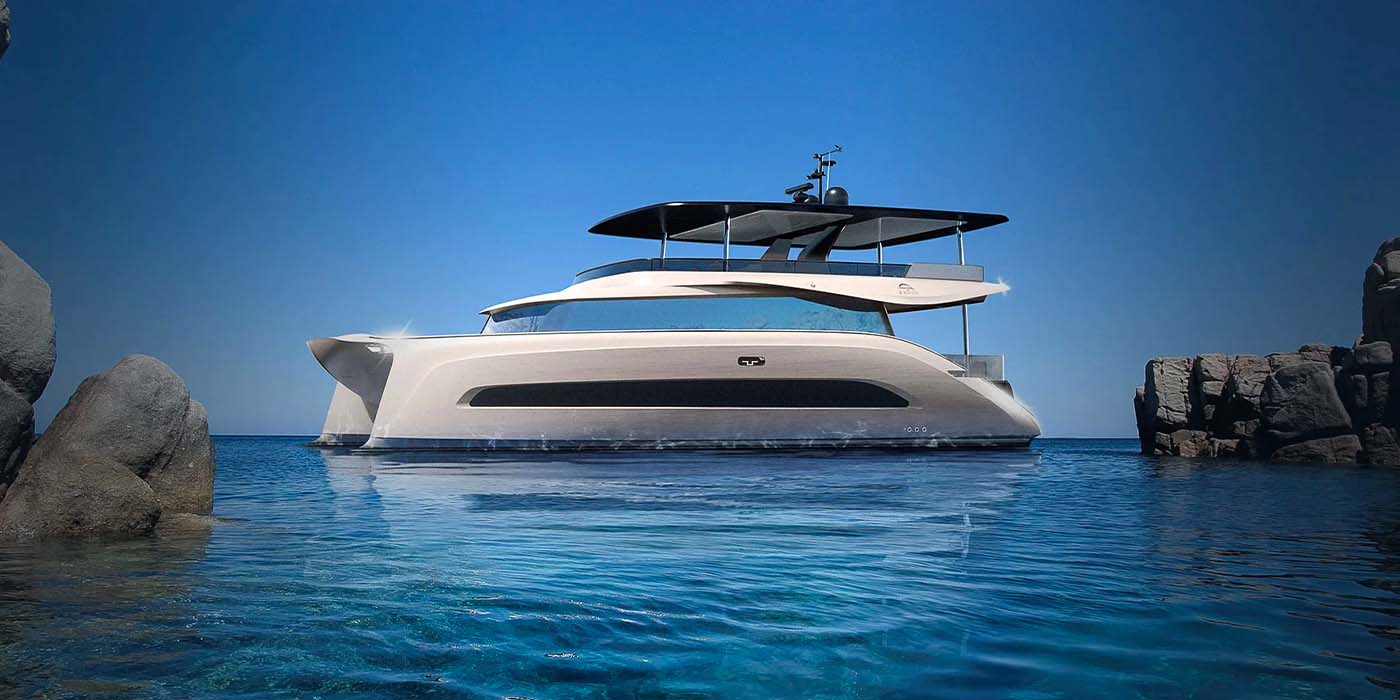
European yacht broker MYSEA has announced the beginning of sales of the AQUON One eco-catamaran – a solar electric yacht powered by the sun and hydrogen fuel cells with luxurious accommodations for eight to ten passengers without any emissions.
This 8,400-sq.-ft. Domus solar trimaran concept plans to deliver unlimited range at sea with zero emissions

Meet Domus – the solar electric sailing yacht concept created as a collaboration between Rob Doyle Design and Van Geest Design. This 40-meter sailing vessel promises to deliver the interior volume of a 60-meter yacht and can propel itself using wind, solar, hydro regeneration, and hydrogen fuels cells to deliver “unlimited range.” All without any carbon emissions. Did we mention it has a movie theater?
ALVA Yachts introduces new 78-foot solar electric catamaran with ‘transatlantic range’
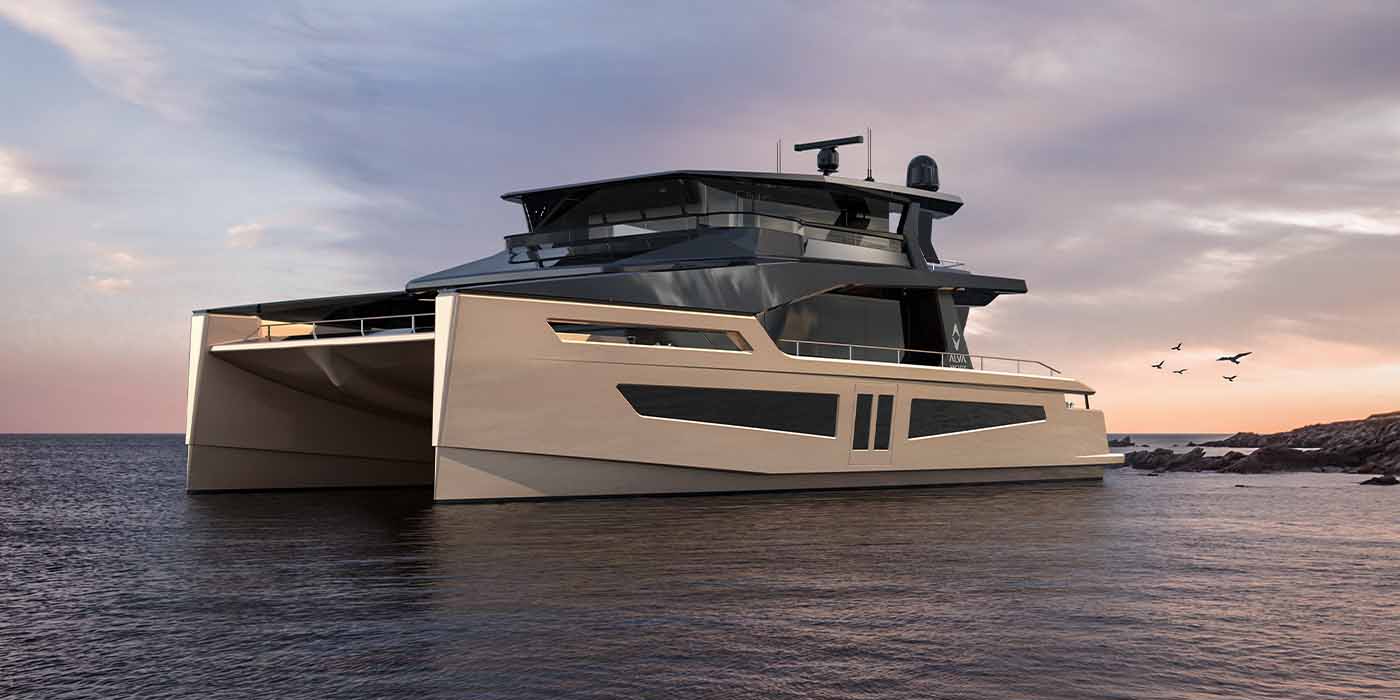
Luxury electric boatbuilder ALVA Yachts is back with its latest solar electric catamaran. The upcoming OCEAN ECO 78 will arrive as a mid-size marine vessel in ALVA’s current lineup and comes equipped with the solar and electric propulsion technology to reach a top speed of 14-15 knots (16-17 mph) at sea, plus plenty of battery capacity to go far – all backed by solar panels on its roof.
ZEN Yachts secures $5.9M in Series A alongside new orders for its solar electric catamaran
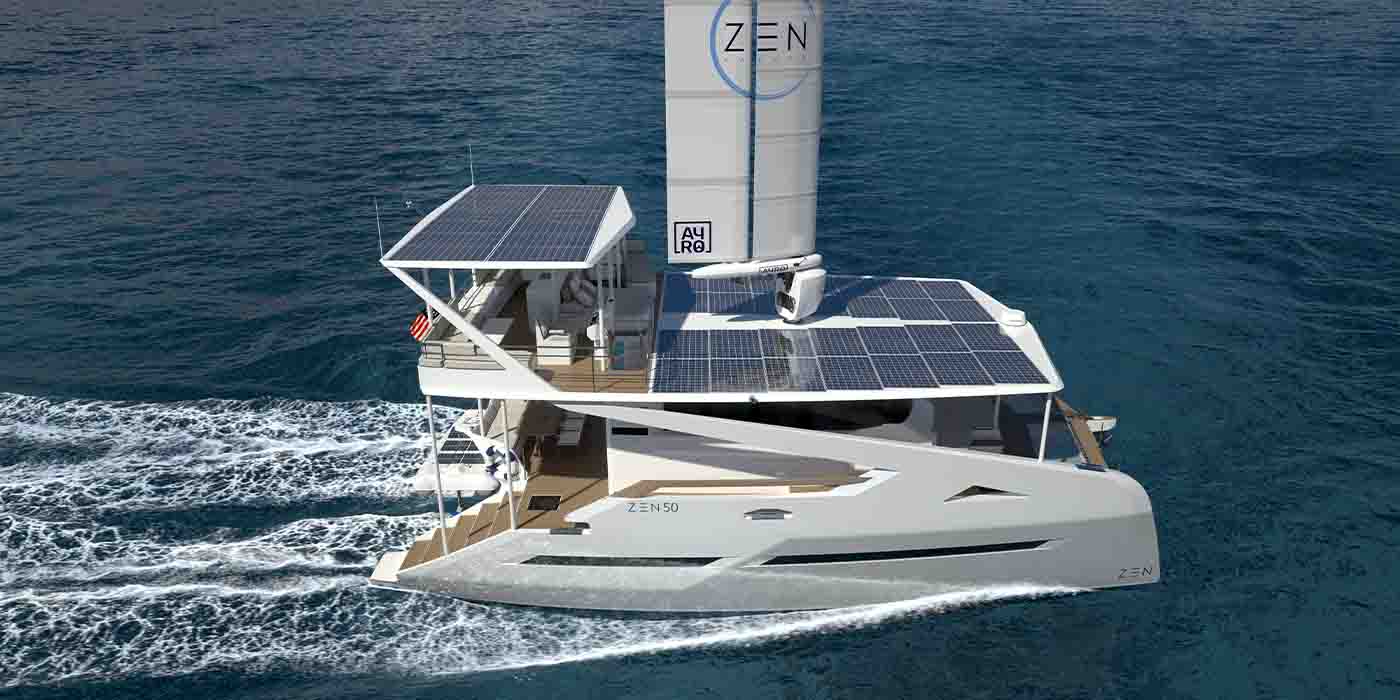
Nascent solar electric catamaran manufacturer ZEN Yachts has announced the closing of a Series A funding round totaling 5.5 million euros ($5.86M), sponsored entirely by Ocean Zero, LLC. The zero emissions boatbuilder looks to use the fresh round of funding to continue construction of the first hulls of its ZEN50 solar electric catamaran, of which additional preorders have now been secured.
- Solar power
Check out ArkHAUS – A modular, floating, solar-electric social club for members only

If you thought Soho House was exclusive, wait until you see this. ArkHAUS is an upcoming members-only social club that is as innovative as it is stylish, offering multiple solar-powered, electrically propelled vessels than can be connected to create large floating spaces to work, socialize, and enjoy the views – all while supporting local marine research cleanly beneath the vessel.
- Electric Boat Charging
- Soel Yachts
Soel Yachts unveils 62 ft solar electric catamaran with 564 kWh battery capacity and ‘trans-ocean range’
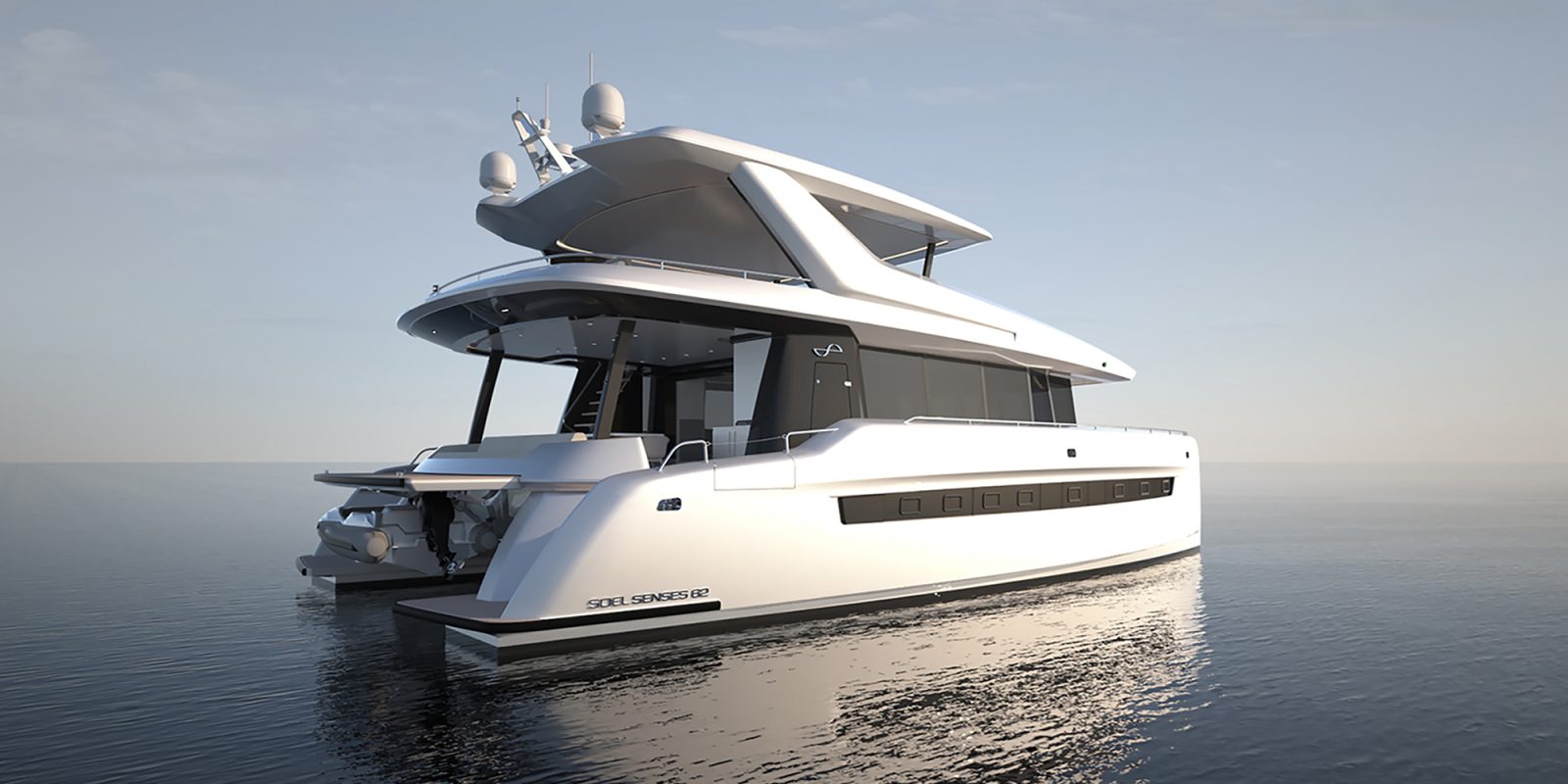
Another day and another solar electric yacht shared with the world, each seemingly going further and faster. The latest announcement comes from Soel Yachts out of the Netherlands, whose new Senses 62 solar electric catamaran boasts some large battery capacity for a yacht, providing what the company calls “trans-ocean range…” however far that means.

Manage push notifications


IMAGES
VIDEO
COMMENTS
100 % ELECTRIC CATAMARANS. GILLES REIGNER YACHTS. We produce 100% electric yachts using the most natural sources of energy: the sun and the wind. Powered by solar panels & wind turbines, our yachts give a complete autonomous range, a robust build, and an array of innovations for an optimum yachting experience.. Gilles Reigner Yachts, a pioneering force in maritime excellence, defines the ...
Our first model, the Silent 64, was launched to the market in 2016, several years before any other shipyard considered the possibility of going electric. Our founders began to research alternative energy sources to power yachts during the mid 1990s. Today, the technology of our in-house developed solar-electric drivetrain has been perfected and ...
The blue water capable ZEN50 lightweight racing carbon hulls are combined with a huge solar roof for an unrivaled solar power vs. displacement ratio above 1:1 (18 kW / 17 tonnes), making this yacht completely energy self-sufficient. A revolutionary, fully automated, wingsail - by Ayro© - can be added as a range and speed extender.
The hull I sea trialed in late 2019 was powered by twin 250-kW e-motors, giving it a solid cruising speed of 10 to 12 knots. Under solar power alone, the yacht makes 5 to 6 knots. Among the many things that make the Silent 55 unique are the 30 solar panels arrayed on its coach roof.
On the smaller 55 and the 64, Silent Yachts currently recommends a 19m2 kite that costs around €25,000 - a fraction of the cost of a new mast, boom, shrouds and sails. "The sail ...
The solar-powered Silent 64 is the first model to be built by Silent Yachts. The traveler, he noted, is at the mercy of the vessel's fuel -capacity. While the powerplant or generator is running, the fumes, constant noise and vibration can wear you down as much as sporty conditions and merciless sun. (And the need for maintenance increases.)
The new Explorer Eco 40m is the company's smallest electric yacht to date, but debuts with some of the most advanced technology, including Sunreef's proprietary "solar skin" Sunreef Yachts ...
Eco-responsible shipbuilder Sunreef Yachts had given the public its first glimpse of its new 80-foot solar electric yacht before it makes it US debut in Fort Lauderdale, Florida later this month.
In addition to the wind kite option, the SILENT-60 yacht comes with 42 solar panels, garnering 17 kWp of energy from the sun to power two, 340 kW electric motors.
The electric propulsion is powered by a 48 volt system, meaning it's safe to touch without electrical shock (an ideal situation for maritime fun). Each electric motor on the yacht is powered by ...
Our electric propulsion systems excel in terms of power density and system weight. With an average of just 1 kg per kilowatt (1 kg/kW), our PMS electric drive train stands as the lightest and most powerful system in its class. This achievement is built on our extensive experience in ocean-going solar electric naval architecture and photovoltaic ...
What makes our solar-electric yachts unique and sets them apart from the rest? It is our extensive experience with the technology. By substituting generators with solar power and large battery banks in order to supply energy to all household appliances on board since the mid 1990s and by pioneering the solar-electric drivetrain during the mid 2000s, Silent has gathered about 30 years of ...
The Sunreef 80 Eco runs on two electric engines or the wind. It also has a "solar skin" and hydro generation system to produce clean energy.
Polish luxury catamaran builder Sunreef Yachts, has a buyer for its electric solar panel and wind turbine-powered catamaran, the Sunreef 80 Eco — its most sustainable yacht to date. Founded in 2002 in Gdansk, Poland, by French builder Francis Lapp, Sunreef Yachts has been at the forefront of luxury sailing for two decades.
These massive batteries are replenished by solar panels, wind turbines, hydrogenators, or a combination of all, allowing electric catamarans to ply oceans with an extended range. Sunreef Yachts Eco remains at the forefront of eco-friendly responsible yachting with their electric sailing and power catamarans. The shipyard has made impressive ...
To that end, Silent-Yachts and Sunreef Yachts use solar panels. The team at Silent-Yachts specs its panels from California-based SunPower, while Sunreef Yachts created the marine industry's first flexible solar panels, which are flush-mounted on hulls, masts and superstructures. ... "Wind turbines can only supply a small fraction of the ...
Everything you need to know about yacht solar power. Marine solar panels are becoming more efficient and eco-friendly. Dennis O'Neill reports on the latest design advances. Keeping your batteries topped up without having to run the engine is a continuous challenge for cruising sailors, especially those who are highly conscious of their carbon ...
Sunreef 43M Eco (140 ft) Silent 120 Explorer. 100 Sunreef Power Eco. Most affordable $: Azura Marine - Aquanima 40. Other alternatives ⛵: Soel Yachts - Soel Senses 48. Serenity Yachts - Serenity 64 (Hybrid) Here's a quick summary of the features of the best solar catamarans for green yachting in 2023-2024:
Hydro generators. For a yacht averaging 150 miles per day (6.25 knots), Watt & Sea's 300W cruising model will produce around 175ah per day. This rises to around 275ah per day at an average speed ...
Solar catamarans harvest power from the renewable elements for a more eco-conscious and efficient cruising experience. In-house designed and manufactured by the shipyard, Sunreef Yachts' solar panels are state-of-the-art. They can be easily mounted anywhere on the sustainable yacht's surfaces, including the hulls and masts, maximizing solar power.
Dmitrii Tishchenko/Getty Images. Like most every other city in Russia, Nizhny Novgorod is home to a Kremlin. (The word "kremlin" means "citadel" in Russian, and has nothing to do with the modern Russian government) One thing that elevated the Kremlin of Nizhny Novgorod above others in Russia (with the possible exception of the Moscow Kremlin and one or two others), however, is the fact that ...
If you are not that into art, there are plenty of other places worth putting on your Nizhny Novgorod itinerary, f.e., the grand red-brick Kremlin. The Cathedral of Archangel Michael, which is actually the only church that has stood the test of time in Kremlin, along with multiple ancient towers is what makes this site a must-see.
Apr 3 2024 - 7:20 am PT. Sustainable boatbuilder Sunreef Yachts is adding a sleeker, lighter solar electric catamaran to its portfolio. The new Explorer Eco 40m is the company's smallest ...